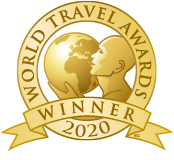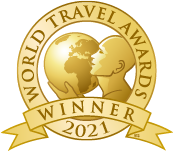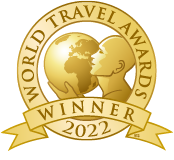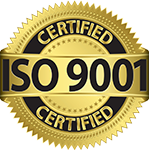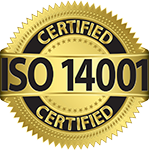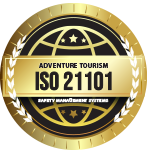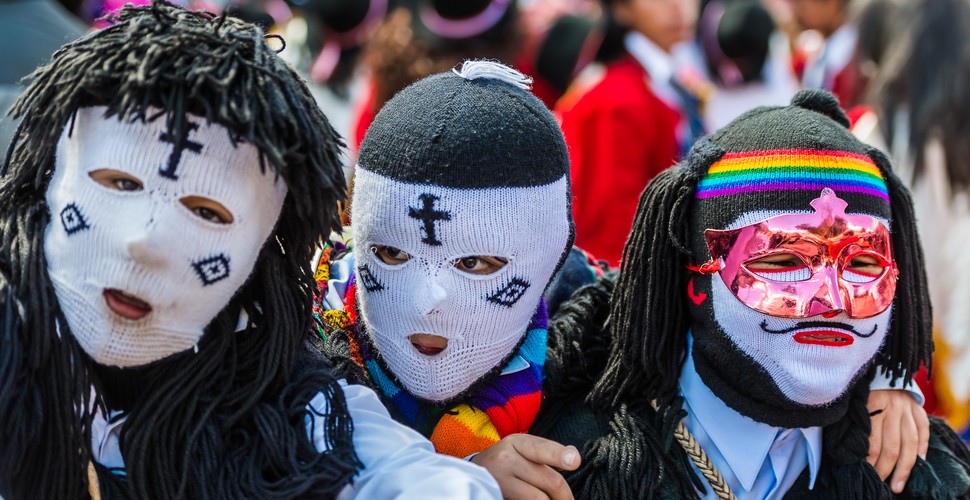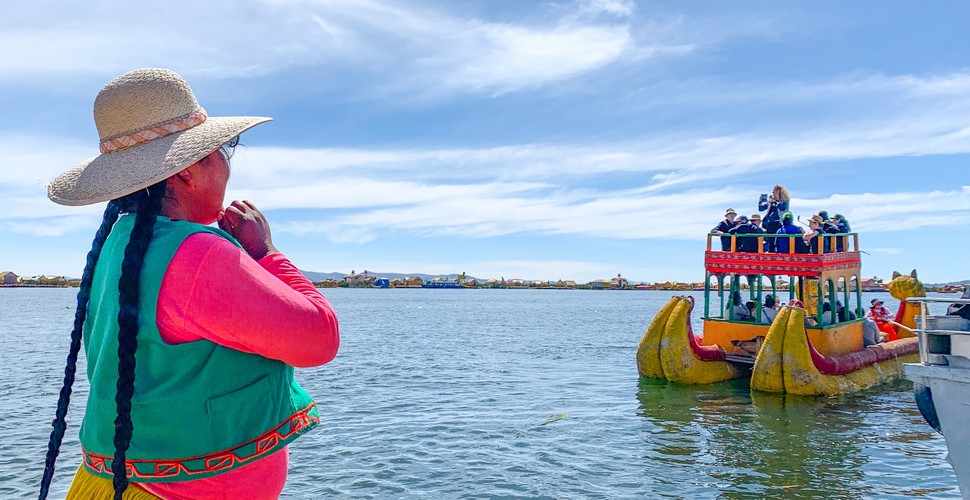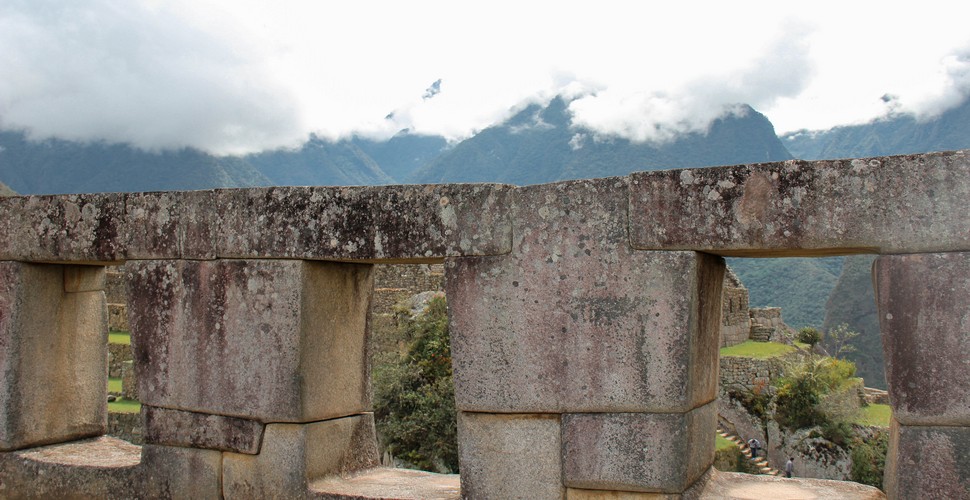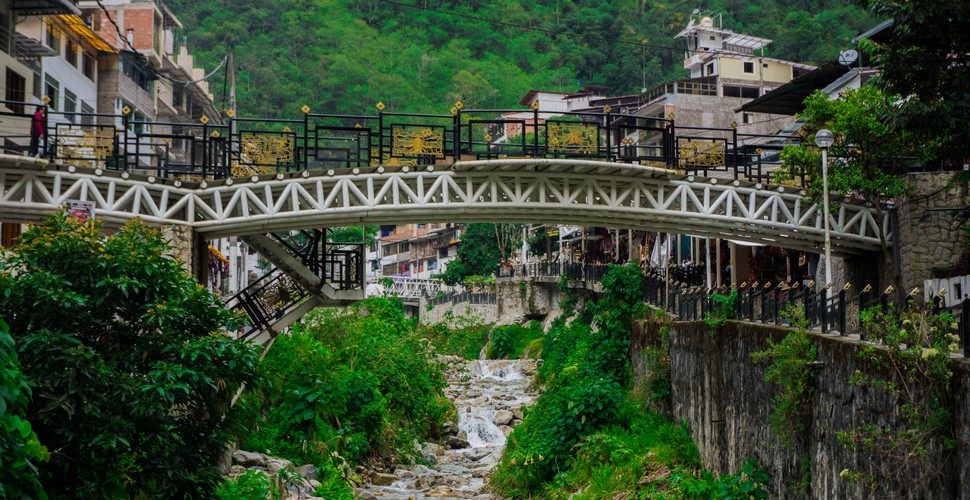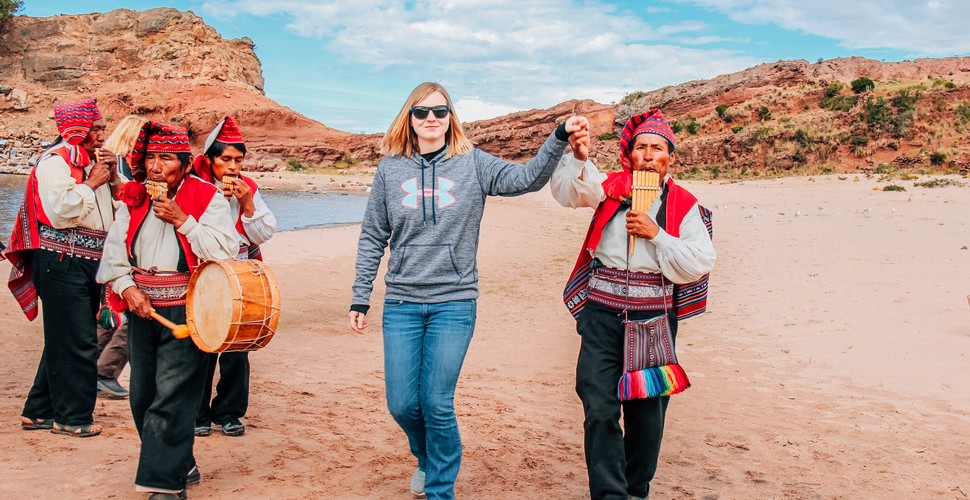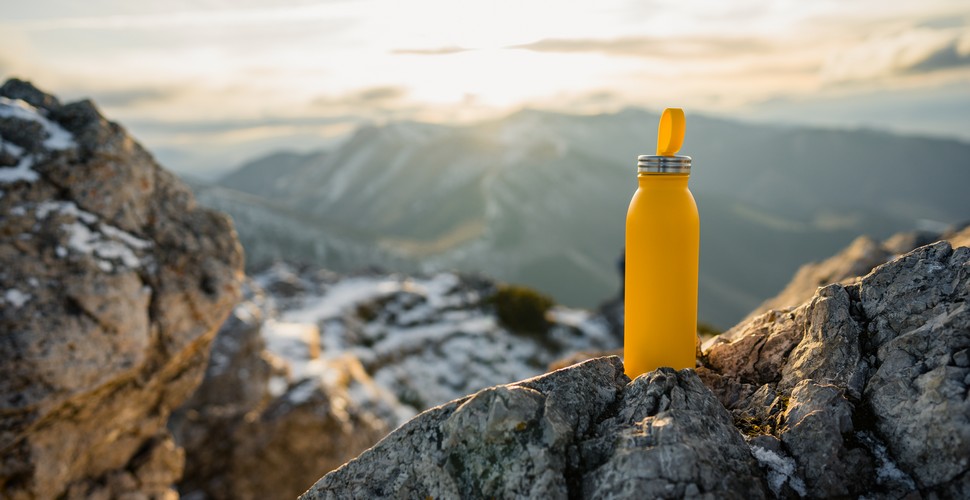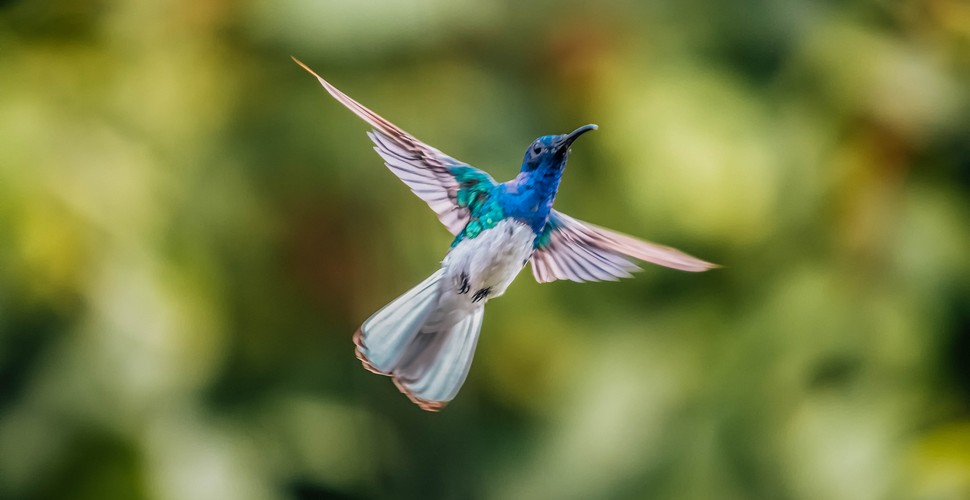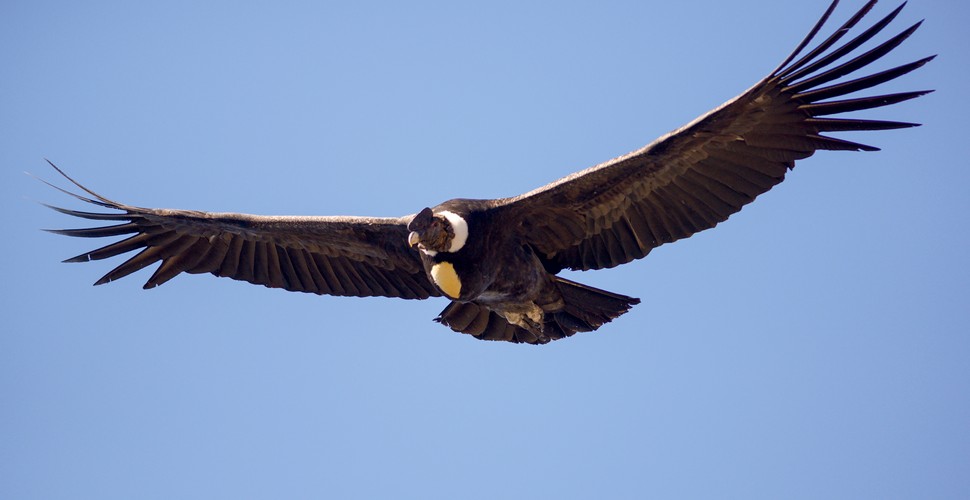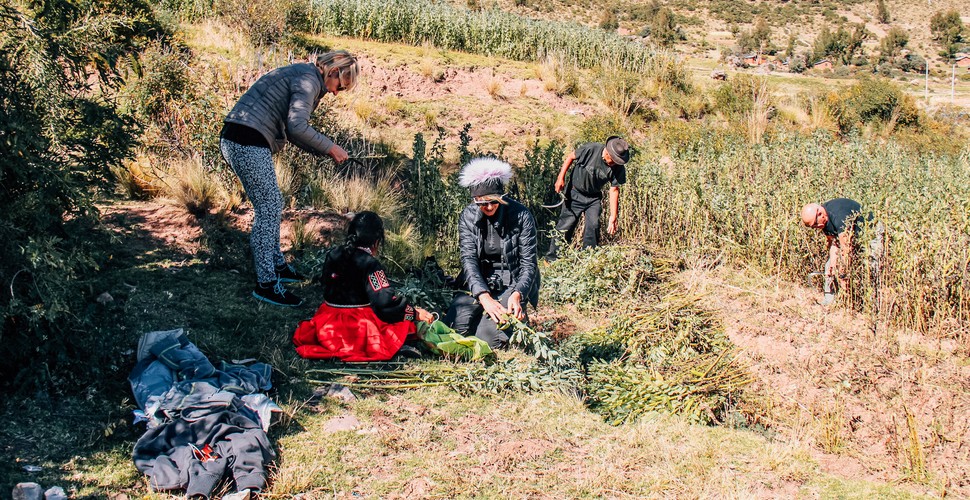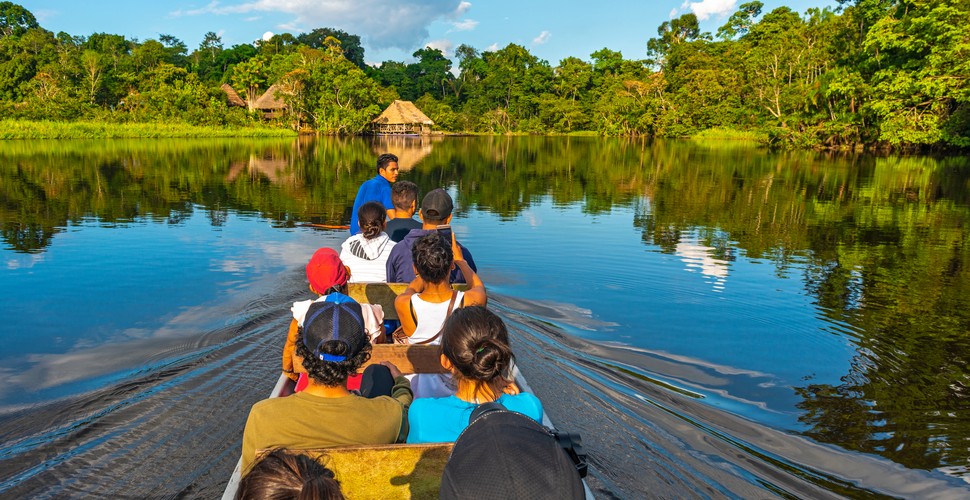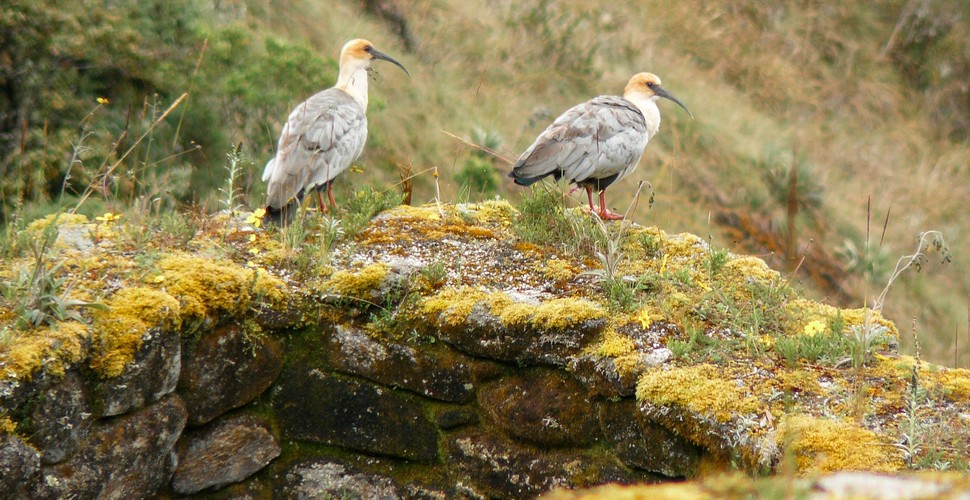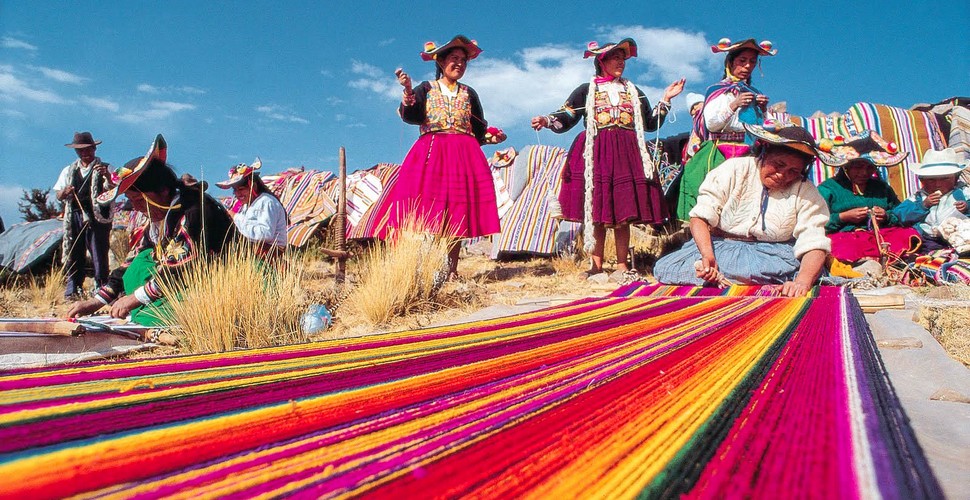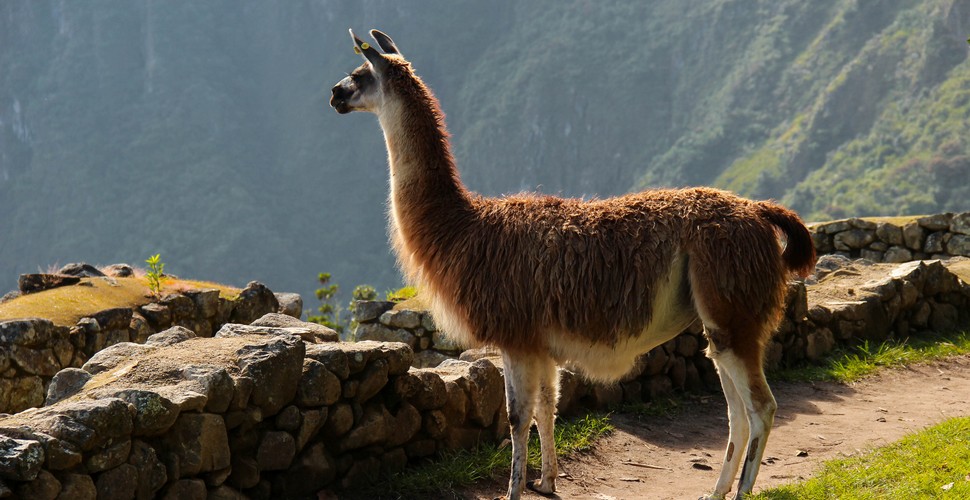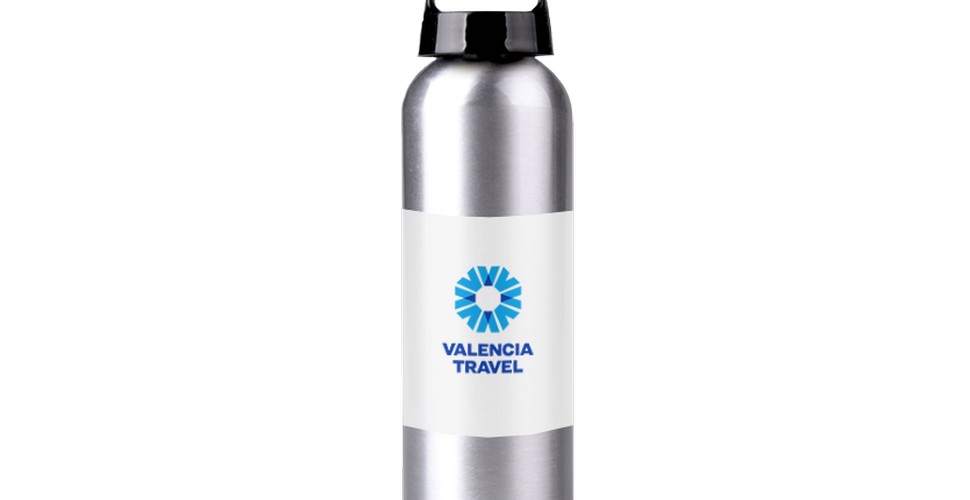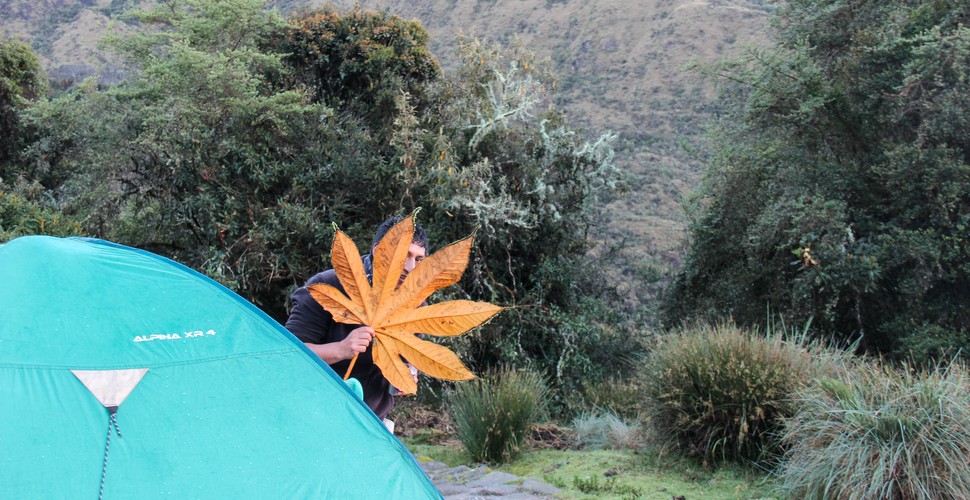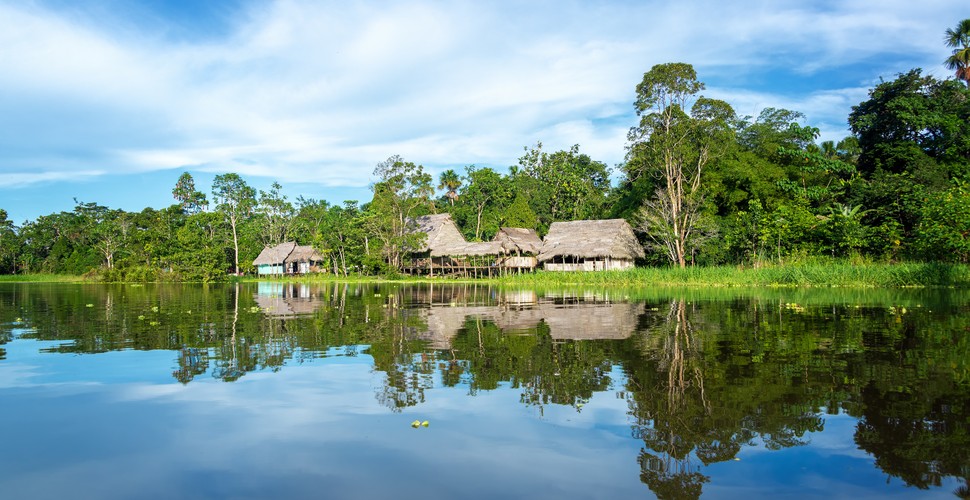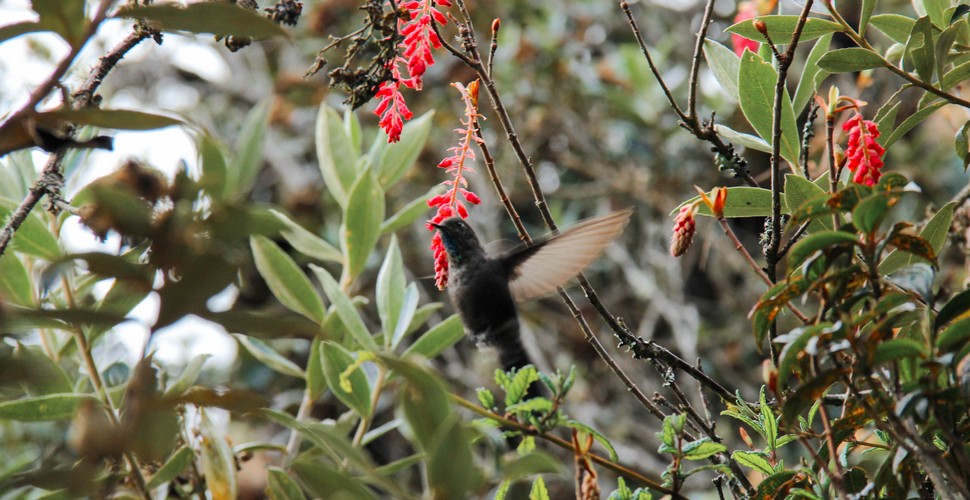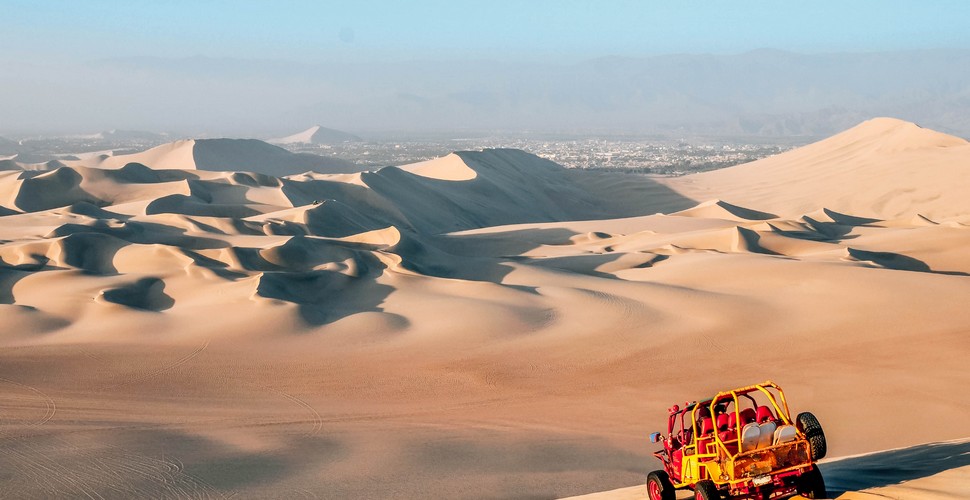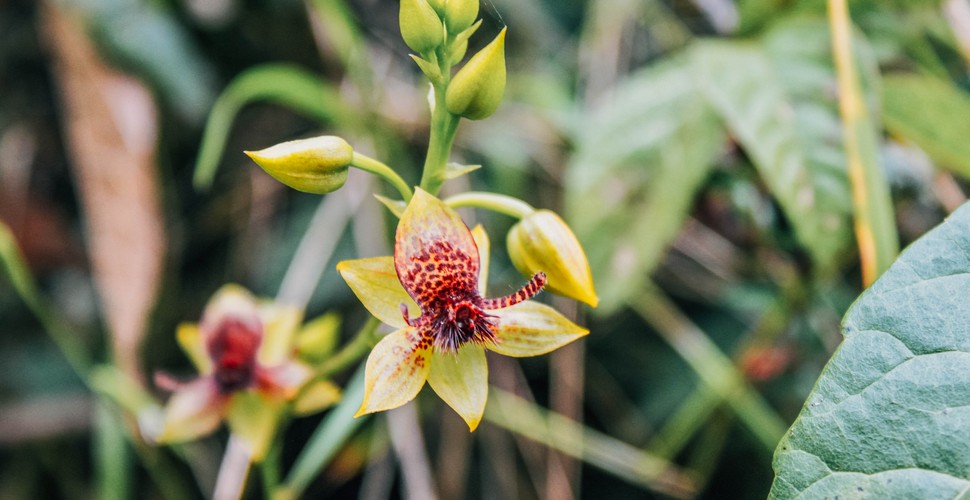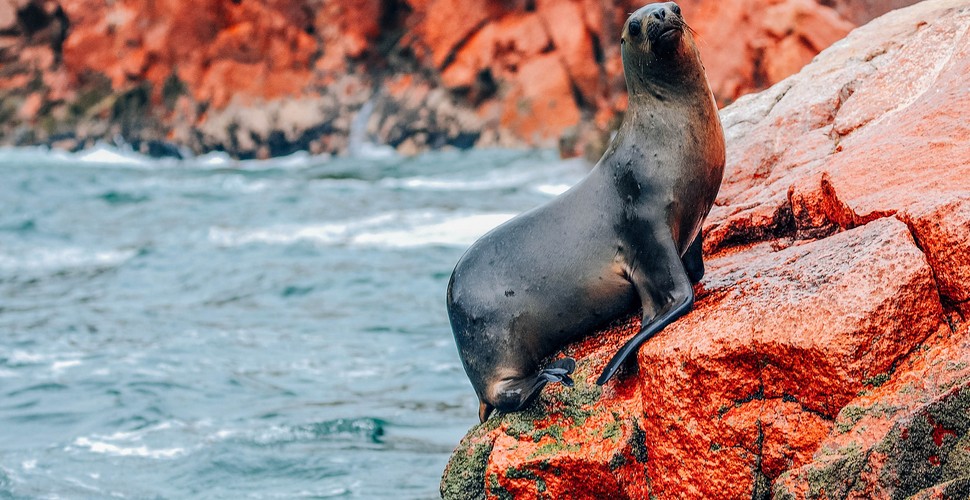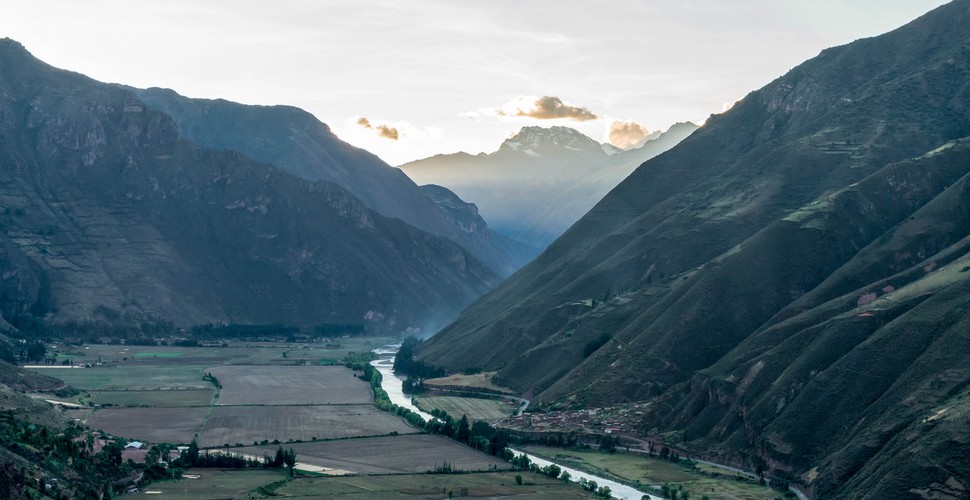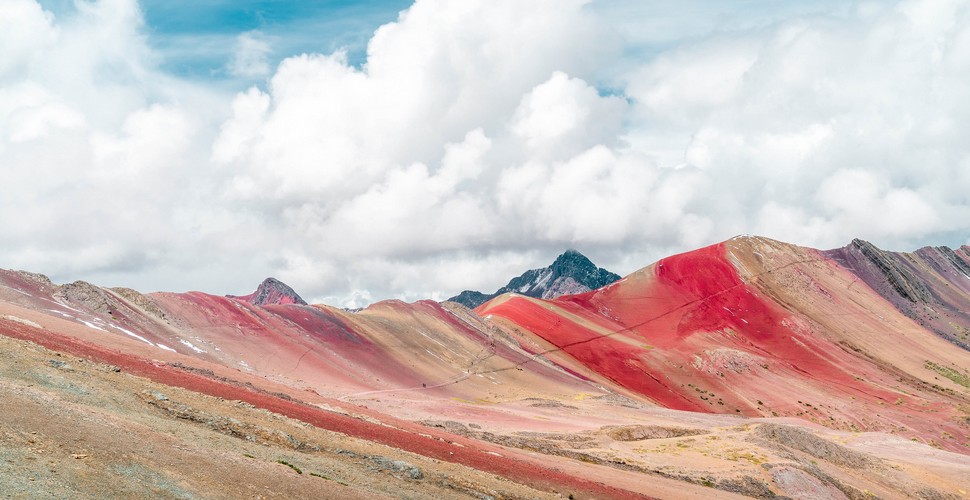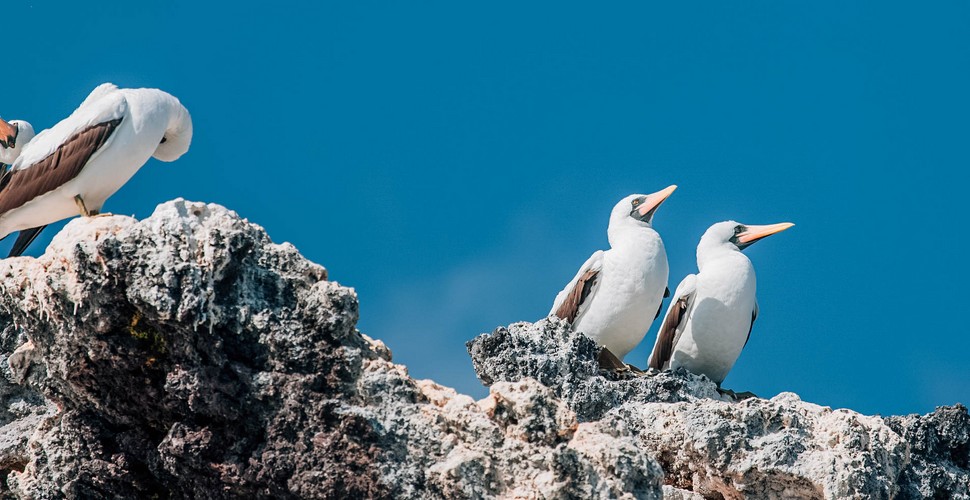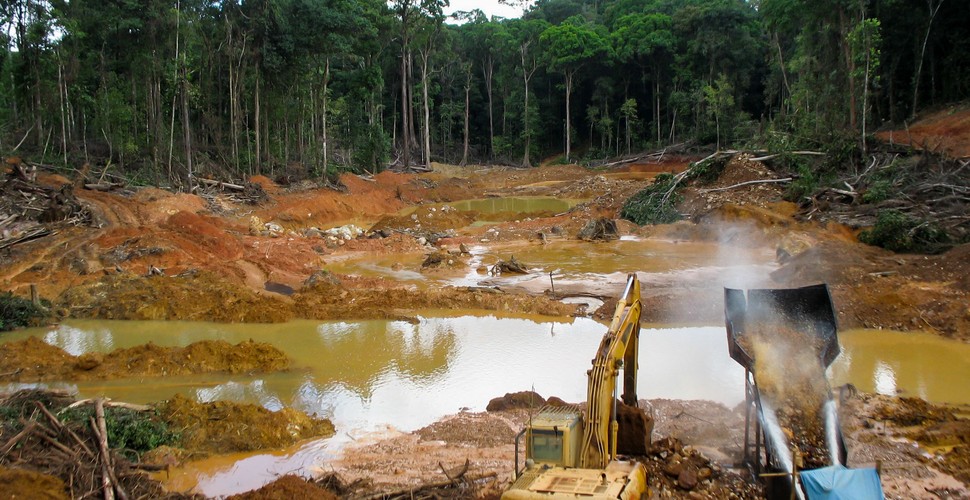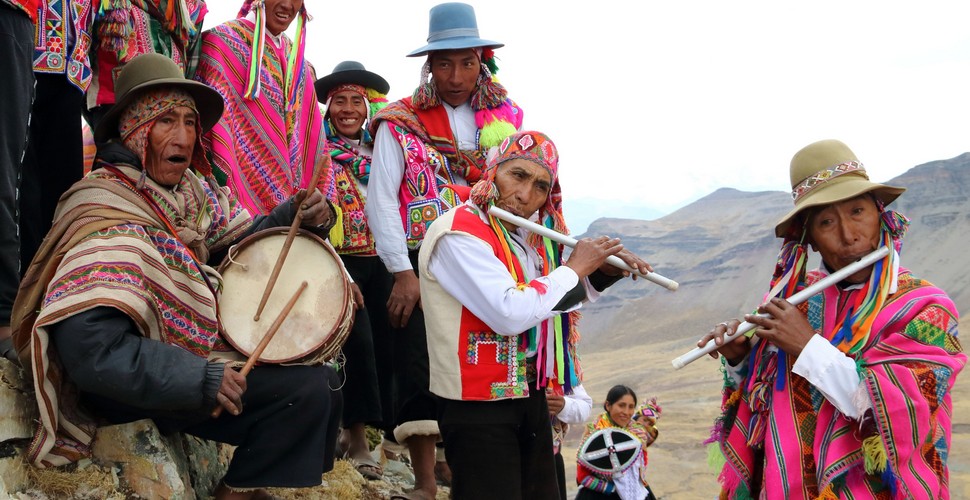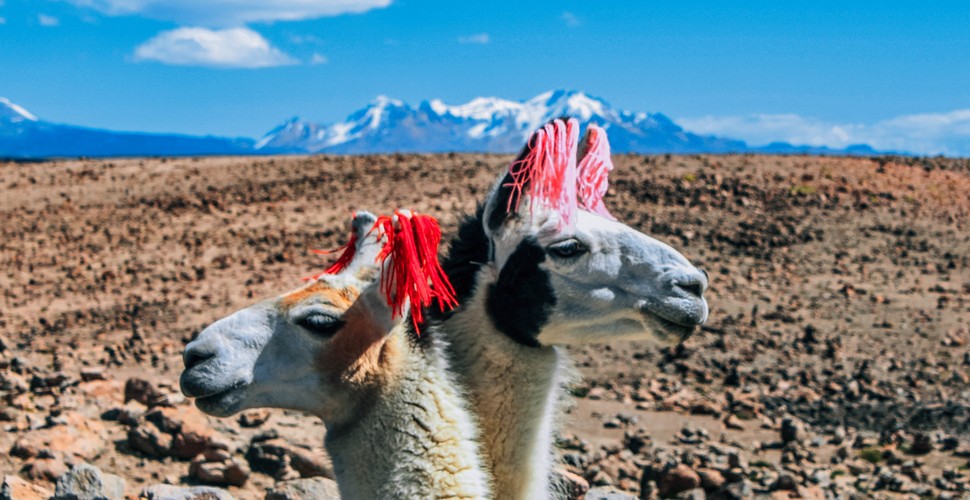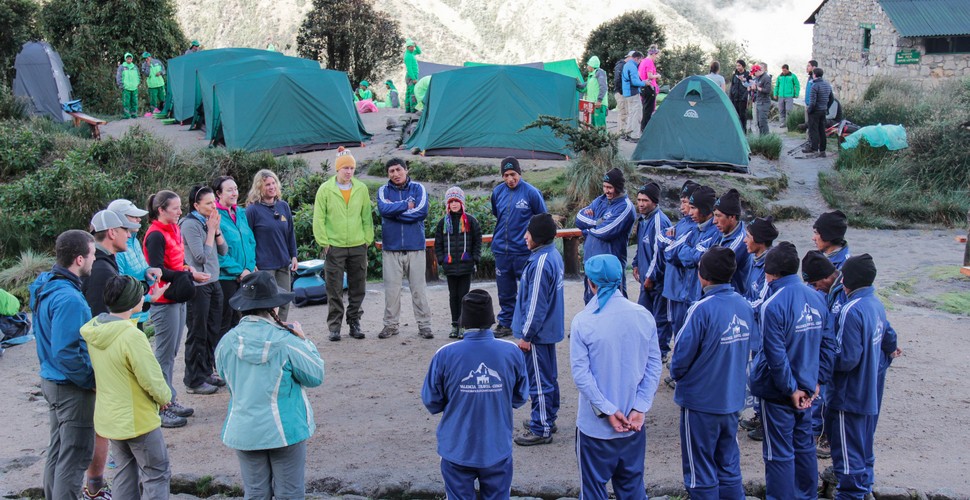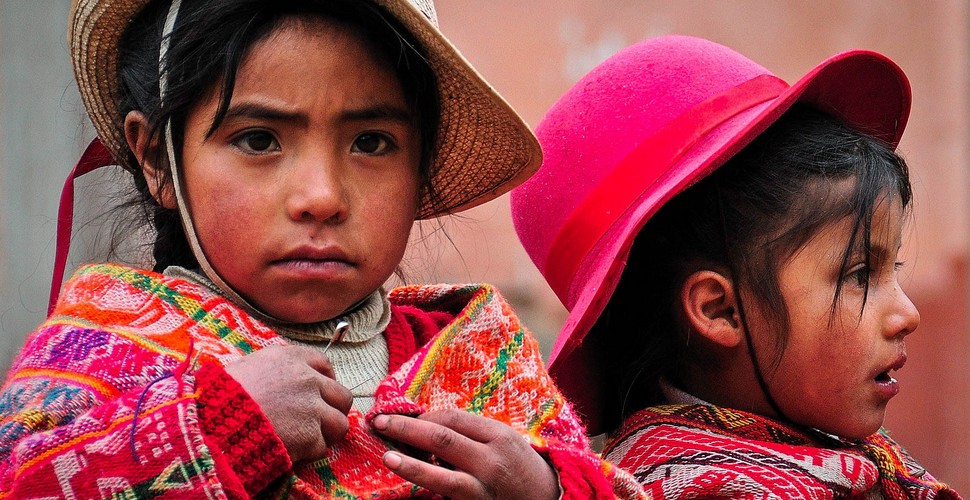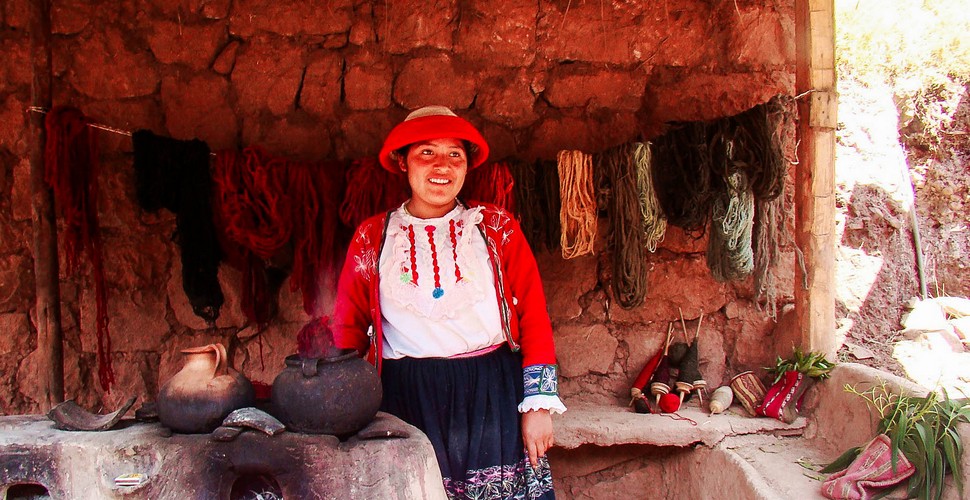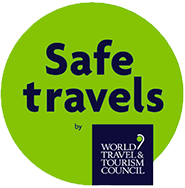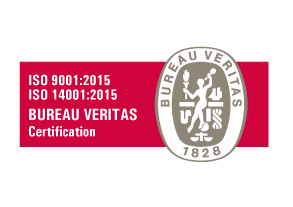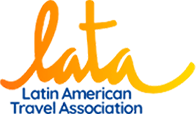
Visit The land of The Incas : Experience Peru From The Andes To The Amazon On Our Exceptional Peru Tours
Book Your Dream Peru Vacation PackagesExplore our Peru Tours! Discover Peru With Local Experts Who Have Provided Sustainably Curated Adventures Since 2009!
Uncover The Country´s Most Iconic Sites with Our Extensive Peru Travel Packages
The Perfect Tour For You!
Valencia Travel Cusco specializes in creating personalized Peru Travel Packages. They highlight the diverse beauty, unique culture, and rich history of Peru. Travel from the bustling cities of Lima, to the serene mountains of The Cusco region. Discover Peru like never before. This South American country is packed to the brim with amazing things to do. Ancient archaeological sites and jaw-dropping natural marvels. Biodiversity that's off the charts! World-class hiking routes. The genuine human friendliness. Peru has a unique essence that is completely unparalleled on the planet. Experience all this and more, on our carefully designed tour packages. From the mysterious Nazca Lines to the largest navigable lake on the globe. Titicaca. From mystical monuments such as Machu Picchu, preserved in time. To rainbow-colored mountains that almost touch the sky. From the deep dark jungle of The Amazon Rainforest to the magical sand dunes of Huacachina. From the marvels of The Pacific Ocean to the majestic condor flying over the Colca Canyon. This magical land is so awe-inspiring that it transcends mere travel. On our Vacation Packages, you can explore the magic of Peru for yourself. Though you should be warned, that this will only be the beginning of a lifelong love affair!
Our Peru Travel Packages
Explore the highlights of this South American gem! Be astounded by our diverse range of Tour Packages. Are looking for adventure activities? Trekking tours? History and cultural tours? Wildlife and ecological tours? Photography tours? Gastronomy tours or wellness tours? Peru literally has it all! At Valencia Travel, we will make sure you experience all this and more!
7 Day Classic Peru. Spending a week in Peru with Valencia Travel is an experience that cannot be missed. In seven days, you will explore many amazing things. The historic center of Lima. A visit to a local weaving workshop in Chinchero. Venture to the ancient Inca city of Ollantaytambo. Then the legendary Machu Picchu. The perfect tour to whet your appetite for further Peru tour adventures.
The Best of Peru - 9 Day A comprehensive Vacation Package that takes you through the most iconic sites of Peru. Lima, Cusco, the Sacred Valley, Lake Titicaca, and of course, Machu Picchu. You can enjoy all this and more on this 9 Day Tour Package. Perfect for those who are short on time but want to experience the country at its very best.
For a more extensive journey, the 12 Day – Classic Peru Tour Package. Offering a deep dive into the cultural and natural wonders of Peru. From the bustling capital, Lima to the ancient ruins of Machu Picchu. On to the azure depths of the gigantic Lake Titicaca. Peru has so much to offer the discerning and intrepid traveler!
The Sacred Land of the Incas - 13 Day. This Travel Package immerses you in the rich heritage of the Inca civilization. Combine visits to historical landmarks with breathtaking natural landscapes. From the mysterious Nazca Lines to the home of the condors- Colca Canyon. From the depths of Titicaca Lake to the mind-blowing Machu Picchu. Explore this sacred land to the full on our Peru Travel Packages.
For an even more magical experience, the Colours of Peru - 14 Day tour. This tour offers an extended exploration of Peru's most enchanting sites. Blending adventure with cultural insights. Learn about the country´s vibrant traditions in traditional weaving communities. Take the Titicaca Train through glorious Andean scenery. Visit the megadiverse Amazon Rainforest. Last but not least, the iconic Machu Picchu. All this and more on this 2 week tour package to the country´s signature sites. Brimming with a cultural flavor and a touch of luxury. This amazing vacation package is the perfect exploration of Peru. As we as an exploration of its vibrant traditions.
Finally, the Best of Magical Peru - 15 Day. This tour package provides a vibrant journey through the country´s diverse regions. It highlights the country's stunning scenery, rich traditions, and unique flavors. This travel package will take you from the Amazon Rainforest to the sacred peaks of The Andes. Brimming with ancient Inca archaeological sites, such as Machu Picchu. Visit the highest lake in South America - Lake Titicaca and one the deepest canyons in the world - Colca Canyon. If you love superlatives, this epic Peru adventure is designed for you!
*Valencia Travel Cusco is committed to sustainable tourism. We offer an unparalleled service. To make sure your Vacation Packages are beyond extraordinary.
More Information? Read Our All You Need To Know About Peru Travel Packages.

From The Andes to The Amazon - Explore Peru´s Marvels on Valencia Travel´s Spectacular Peru Travel packages!
Important information for Peru Tour Packages
How to Book Your Peru Travel Packages
+How To Plan and Reserve A Peru Tour
Peruvian masks
Trip Planning for Your Vacation Packages
Machu Picchu is one of the best-known travel destinations in the world. Our Peru Vacation Packages are built around this magical Inca masterpiece! We offer a complete cultural experience in Peru. One that allows you to immerse yourself in the ancient Inca way of life. MODERN, NATURAL, and HISTORICAL Peru. Our Travel Packages will take you to the signature sites of the country. and are jam-packed with interesting and unique activities for your journey through Peru. Check out our All You Need to Know About Peru Tour Packages Section. Full of essential tips for planning your trip to the incredible land of the Incas!
Insert Video
Book Your Peru Travel Packages - Step-by-Step
We recommend that you make a reservation for your Peru Vacation Packages. This is to reserve your entrance fee well in advance. Certain dates such as those during high season can sell out quickly. The daily limit to enter Machu Picchu is 2000 people. This is spread over different entrance times. If you want a group Tour Package the dates are often defined. This requires an element of flexibility on your behalf. If you need specific travel dates. For work leave or holidays, consider a private travel package. A private Trip Package for you and your traveling party will guarantee the exact dates of your visit. To visit the magnificent site of Machu Picchu.
Step-by-Step Guide
-
Click on the Machu Picchu tour of interest, for example, The Best of Peru
-
Click on the Book Now Button.
-
Choose your preferred Date.
-
Complete the Form
-
Click Next and complete your Personal Details
-
Click Next to go to the Payment Section
-
Enter your Payment Details
-
Get Excited for your Peru Trip!
Please review our booking conditions here. Booking with Valencia Travel means you have read and agreed to these conditions.
See a detailed list of payment methods here. Please remember that any bank fees or credit card charges are the responsibility of the customer. Credit card charges are 5% of the tour cost and bank fees are generally $15 USD per transaction.
You will require a comprehensive travel insurance policy to be able to travel on any Peru Tour packages. Please send us the insurance details once you have them.
The Floating Islands of Lake Titicaca
FAQs About Peru Travel Packages
+Frequently Asked Questions About Peru Tour Packages
Peru is a captivating South American country. Blessed with a rich cultural heritage and a fascinating history. That weaves together the legacies of ancient civilizations. On our Travel Packages, you can visit magnificent archaeological sites. Machu Picchu, the Nazca Lines, Sacsaywaman Ollantaytambo, and Kuelap. The country's colonial past is beautifully preserved in cities like Cusco. With its stunning architecture mixed with vibrant ancient traditions. Immerse yourself in the authentic ways of life in The Andes. From traditional markets, and ancient Andean ceremonies, to colorful ancestral festivals. Discover the flavors of Peruvian cuisine. A fusion of Quechua, Spanish, and international influences. Investigate the past, savor the present, and be a part of the enduring cultural story on your Peru tours. Our travel packages are meticulously curated to showcase Peru´s principal attractions. Explore the ancient mysteries of Machu Picchu. The awe-inspiring Andes mountains, and the grandeur of Cusco's historic treasures. Wander through the Sacred Valley, where Inca history unfolds before your eyes. Sail on Lake Titicaca. The highest navigable lake in the world, and discover its floating islands. Marvel at the mysterious Nazca Lines etched into the desert floor. Beyond Peru´s archaeological wonders, experience the eclectic culture of Lima. Sample delectable Peruvian cuisine. Dive into the darkest depths of the Amazon rainforest, teeming with exotic wildlife. Our Vacation Packages are designed with one aim - to immerse you in the true essence of Peru. Here are some frequently asked questions about our Peru tours so that you know what awaits!
Where is Peru?
Peru is one of 12 nations in South America. It sits just south of the equator to the west of the continent. The country is famous worldwide for the Inca archaeological site, Machu Picchu. Travelers also come to Peru to visit the Amazon rainforest. As well as the highest navigable lake in the world, Lake Titicaca. The center of the country is 10 degrees south latitude and 76 degrees west longitude. Peru is the third largest country in South America. It has 3 three distinct geographic zones: the coast, the mountains (The Andes), and the jungle (The Amazon). The country has 5 land borders, with Bolivia, Chile, Colombia, Brazil, and Ecuador. The country has a total area of approximately 496,224 square miles or 1,285,216 square kilometers. This makes it a fascinatingly large country to visit on your Travel packages.
What is the Capital of Peru?
Lima is the capital of Peru. It was founded in 1535 as the "City of Kings". It took this name because the date it was founded coincides with Epiphany on the 6th of January. The city is the biggest in the country and has 10,151,200 inhabitants (including the district of Callao). The city was the main port of exit to Europe taking the natural resources to Spain. Lima has a mild climate, despite its location in the tropics and the fact it is found in the desert. Lima's proximity to the Pacific Ocean leads to intense humidity. Therefore making the climate much milder than those to be expected for a tropical desert. The” garua" or mist that comes in off the ocean keeps the temperatures uniform all year round at 12 °C (54 °F) or rise above 30°C (86 °F). The Peruvian capital also has high humidity throughout the year. However, it rarely rains. All of our Peru Travel Packages begin and end in Lima!
What Are The Best Activities to Do in Peru?
Peru is an incredible country. It has geographical diversity, a variety of climates, and microclimates. As well as diverse regions, a mindblowing history. and a unique vibrant culture to enjoy on your Travel packages. There really is something for everyone in this spectacular South American country. Check out our blog about the best activities to do in Peru for a guide on what to do in the country.
MORE FAQs ABOUT PERU TOUR PACKAGES
Planning & Booking Your Tour
There’s no doubt about it; Peru is one of the best places in the world to go for adventure travelers. The huge variety of landscaped and unique places to visit is enough for anyone to want to head to this wonderful country to see what it has to offer. But the question arises, how far in advance do I need to book my trip to Peru? Here are our recommended booking times for Peru travel and trekking.
Plan Your Itinerary
Before you do anything else, you need to know exactly where you’ll be going and what activities you plan on doing. Do you want to stay by the sea? Or are you hoping to do the world-famous Inca Trail to Machu Picchu? Or maybe you want to hike through all types of climates and vegetation. Take time to carefully plan where you want to go and how you’ll do it. Know how you’ll travel from place to place and how much time it should all take. We recommend doing this well in advance because things can get booked up months ahead of time, especially the Inca Trail. Does this sound daunting? Don´t worry, our expert travel advisors will be with you every step of the way during the planning process of your Peru trip!
Inca Trail Permits
The Inca Trail to Machu Picchu is the only trek that requires permits and numbers are limited. Ideally, you should try to book the Inca Trail about six months in advance, especially if you want to go during high season (June, July, and August). During these months, trail permits can sell out six months in advance. The months surrounding high season can also sell out ahead of time. If you want to hike the Inca Trail in April, May, September, October or November, try to book at least four months in advance.
Trekking in Peru
When looking at treks to reserve, it’s a good idea to consider your hiking ability. Some people are seasoned hikers and do it all year round, whereas some people come for the first time to somewhere like this. You should be fit and healthy and know your limits. Also, be aware that trekking at high altitudes is much more strenuous, so enjoy a few days at a city or town in the region before setting off on foot. The more you spend acclimatizing, the better trekking experience you will have. The ideal time to book a trip to Peru for trekking can vary depending on several factors, including the specific trek you want to hike, the time of year you plan to visit, and your personal preferences. Here are some general guidelines to help you determine when to book your trek in Peru.
Peak Season vs. Off-Season
Peru's peak tourist season typically coincides with the dry season, which runs from May to September. During this time, popular treks like the Inca Trail to Machu Picchu and Salkantay Trek can get fully booked several months in advance. If you plan to trek during these months, it's advisable to book at least 4 to 6 months ahead.
Shoulder Seasons
The shoulder seasons, which include April and October, can be a good compromise between avoiding the crowds and the risk of bad weather. You can often book treks for these months with a bit less advance notice, around 2 to 4 months ahead.
Rainy Season
The rainy season in Peru typically lasts from November to March. While some treks are still possible during this time, such as the Lares Trek to Machu Picchu, you'll need to consider the weather and trail conditions. If you're flexible and willing to take a chance on weather disruptions, you can book treks in the rainy season with shorter notice, perhaps 1 to 2 months ahead. You also need to decide if you want to be trekking in the rain for 4 or more days or whether you prefer drier weather, and reserve accordingly.
Group Tours vs. Private Treks
If you plan to join a group tour, it's a good idea to book as early as possible to secure your spot, especially if you have specific dates in mind. Group treks have fixed dates so you need to book your trip around these dates and have flexibility with your travel dates. For private treks, you may have more flexibility in booking closer to your desired departure date, but it's still wise to plan ahead to ensure availability. Group treks with be more cost-effective as the expenses are shares between all group members. Private treks will be more expensive but you will have a completely personalized trekking service, trek at your own pace, and leave on the date of your choice.
Holiday and Festivals
Consider any major holidays or festivals in Peru when planning your trip, as these can impact the availability of accommodations and tours. Booking earlier is advisable during these times.
Book Everything You Need
It is highly recommend booking as much as possible in advance. This way, you will have all your trip set out and won’t need to worry about anything upon arrival. The last thing you want after hours of traveling is to then need to walk around town finding a hotel and booking a hike.
Sort Out Travel documents in Advance
You will need to have travel insurance if you plan to go hiking in Peru, as many companies won’t allow you to trek with them if you are uninsured. You also don’t want to be injured on a trip and then be presented by a huge hospital bill. Health care isn’t cheap in Peru, so make sure you’re prepared. You also need to make sure that your passport has at least 6 months validity. It is a good idea to make copies of important documents in case anything gets lost on your Peru adventure vacation, including tickets, booking information, passports and vaccination card.
Inform Your Bank
You’re almost ready to jet off, but there’s something else that’s very important you should do before you leave for your Peru adventure trip. Many people forget to let their bank know when they’re traveling abroad and then find that they can’t take cash out at an ATM because of the bank suspects suspicious activity. A few days before you leave, or even the same day, give them a call or access your account online and inform them that you’re going away. Let them know exactly for how long and to which places so you don’t come up against any issues.
We’ll see you soon!
The ideal length of your vacation in Peru can vary depending on your interests, budget, and the specific places you want to visit. Here are some guidelines to help you plan for how long your vacation in Peru should be!
Machu Picchu
If Machu Picchu is a priority for you, like most people who visit Peru, you'll want to allocate at least 2 to 3 days for this experience. This includes travel time to and from Cusco or Aguas Calientes (the town closest to Machu Picchu) and the time spent exploring the site itself.
Cusco
Cusco is a beautiful city with a rich history and plenty to see and do. Plan for at least 2 to 3 days to explore the city and acclimatize to the high altitude before heading from Cusco to Machu Picchu.
Sacred Valley
The Sacred Valley, which includes towns like Ollantaytambo and Pisac, is worth dedicating 2 to 3 days to explore. It offers stunning landscapes, archaeological sites, and a glimpse into local culture. Many Peru vacation packages include a visit to The Sacred Valley of The Incas.
Lima
Peru's capital city, Lima, is often a starting point for international travelers. Spending 2 to 3 days in Lima doing a Lima city tour, allows you to explore its historical center, try its renowned Peruvian cuisine, and visit some museums.
Other Regions
If you have more time, consider exploring other regions of Peru, such as Arequipa, Lake Titicaca, the Amazon rainforest, or the coastal desert. Each of these areas offers unique experiences, and you should allocate several days to each destination on your Peru holiday package.
Trekking in Peru
If you want to include trekking in your Peru vacation, you should allocate extra time for the specific trek you plan to undertake. Here are some popular treks in Peru and their recommended duration
Inca Trail: The classic Inca Trail trek to Machu Picchu typically takes 4 days and 3 nights. This is one of the most iconic and sought-after treks in the world, so you should book it well in advance.
The Salkantay Trek: The Salkantay Trek is an alternative route to Machu Picchu and usually takes 4 to 5 days. It offers stunning mountain scenery and a more off-the-beaten-path experience.
The Lares Trek: The Lares Trek to Machu Picchu is a shorter option, usually lasting 2 to 3 days. It allows you to explore traditional Andean villages and hot springs along the way.
Choquequirao Trek: If you're interested in exploring the "sister" city of Machu Picchu, Choquequirao, the Choquequirao trek to Machu Picchu typically takes 4 days with a transfer to Machu Picchu or if you are feeling extra adventurous there is a 9-day Choquequirao trek to Machu Picchu!
Huayhuash Circuit: For more experienced trekkers, the Huayhuash Circuit in the Peruvian Andes is a challenging trek that can take about 10 to 14 days to complete.
Colca Canyon Trek: Located near Arequipa, the Colca Canyon trek can vary in duration from 1 to 3 days, depending on the route you choose. It's known for its breathtaking views and the opportunity to see condors.
When planning your Peru vacation, make sure to account for the duration of the trek itself, including preparation and acclimatization time, as well as the travel time to and from the trek starting point. Additionally, consider adding a day or two for rest and recovery after completing a multi-day trek, as these treks can be physically demanding due to high altitudes and varying terrain. Including trekking in your Peru vacation can be a rewarding experience, but it will extend the overall duration of your trip, so plan accordingly.
Relaxation: Don't forget to factor in some downtime or relaxation days into your Peru itinerary. Traveling in Peru can be physically demanding due to the altitude and various activities, so it's important to rest as well.
In summary, a well-rounded trip to Peru can vary from 10 days to 3 weeks or more, depending on how many destinations you want to explore and how much time you want to spend in each. It's essential to consider your interests and priorities when planning your itinerary, and don't forget to account for travel time between destinations. Additionally, take into account any seasonal considerations, such as weather conditions, when planning your Peru trip.
How to secure your Machu Picchu tickets in advance:
Machu Picchu, the ancient Incan citadel nestled high in the Andes Mountains of Peru, is a UNESCO World Heritage Site and one of the most iconic archaeological wonders in the world. In any Peru vacation package, Machu Picchu is the highlight and standout attraction in Peru. Visiting this remarkable site is a dream and a bucket-list item for many travelers, but obtaining Machu Picchu tickets can be a complex process due to high demand and limited daily visitor quotas. Here, we will walk you through the process of obtaining Machu Picchu tickets, ensuring your visit to this extraordinary archaeological site goes smoothly on your Peru vacation. Plus, we will explain how to secure your Machu Picchu tickets in advance.
Step 1: Decide on Your Travel Dates
Before you can secure your Machu Picchu tickets, you must decide when you want to visit. Keep in mind that Machu Picchu is open year-round, but the best time to go is during the dry season from May to September when the weather is most favorable.
Step 2: Choose Your Type of Ticket
Machu Picchu offers several types of tickets to cater to different preferences and budgets. The most popular options include:
General Admission Ticket: This ticket grants you access to the main archaeological site, including the citadel and some surrounding areas.
Machu Picchu + Huayna Picchu Ticket: If you're looking for an extra adventure, this ticket includes access to both Machu Picchu and the nearby Huayna Picchu mountain, which offers breathtaking panoramic views.
Machu Picchu + Machu Picchu Mountain Ticket: For those seeking a different perspective, this ticket grants access to Machu Picchu and the Machu Picchu Mountain, which provides equally stunning vistas.
Machu Picchu + Museum Ticket: This ticket combines a visit to Machu Picchu with the Manuel Chávez Ballón Site Museum, giving you a deeper understanding of Incan history and culture.
Step 3: Check Ticket Availability
Machu Picchu has a daily visitor limit to preserve the site's integrity. Tickets often sell out months in advance, especially during the peak tourist season. To check availability and book your tickets, visit the official Machu Picchu website or use a reputable tour agency such as Valencia Travel that specialize in Peru travel.
Step 4: Purchase Your Tickets
Once you've determined the availability of your desired ticket type for your chosen date, proceed to purchase your tickets online. Be prepared to provide personal information for each traveler, including passport details, as this information is essential for entry. Alternatively, you can book your Machu Picchu vacation package with us, and we will take care of the rest!
Step 5: Plan Your Arrival in Aguas Calientes
The town of Aguas Calientes, located at the base of Machu Picchu, is the gateway to the archaeological site. You'll need to arrange transportation to Aguas Calientes from either Cusco or Ollantaytambo, where most travelers begin their journey. Trains and buses are the primary modes of transportation, on your Peru Machu Picchu trip and reservations should be made in advance, especially during busy seasons.
Step 6: Acquire the Necessary Documents
Before leaving for Machu Picchu, ensure you have the following documents:
- Passport: You must carry the same passport used for booking your tickets as it will be checked upon entry.
- Machu Picchu Ticket: Print a physical copy of your ticket or have it readily available on your smartphone.
- Train and Bus Tickets: If you've booked transportation to Aguas Calientes, have these tickets ready.
Step 7: Arrive at Machu Picchu
On the day of your visit, arrive at the entrance gate to Machu Picchu early. The site opens at 6:00 AM, and arriving early allows you to enjoy the site with fewer crowds and cooler temperatures. Remember to respect the rules and regulations of the site to help preserve this ancient wonder for future generations.
Obtaining Machu Picchu tickets on any of our Peru adventure tours requires careful planning and preparation, but the reward is an unforgettable journey to one of the world's most awe-inspiring archaeological sites. By following this step-by-step guide and making the necessary arrangements in advance, with our help, you can ensure a smooth and enriching experience exploring the wonders of Machu Picchu.
Enjoy your adventure in the heart of the Inca Empire!
In today's unpredictable world of travel, having a reliable trip cancellation policy is like having a safety net beneath your adventures. Whether you're planning a dream vacation to Peru or an iconic hike along the Inca Trail to Machu Picchu, unexpected circumstances can arise, and plans can quickly unravel. Here, we delve into the essential aspects of our trip cancellation policy, why they matter, and how they can offer you peace of mind in an ever-changing travel landscape. So, fasten your seatbelt as we embark on a journey to understand the ins and outs of safeguarding your travel investment in a Peru vacation package.
If You Cancel Your Trip
At the time we receive a written notice, that you want to cancel your trip, the following fees will be charged:
- 30 to 59 days before departure date: 40% of trip cost
- 7 to 29 days: 70% of trip cost
- Less than 7 days before departure date or no-show: 100% of trip cost
On all our Peru vacation Packages, Valencia Travel Cusco, guarantees and provides transportation, bilingual guides, equipment, and food as stated in the detailed itinerary. All tour prices include the services of a driver and/or guide.
Miscellaneous costs are not included. For example: any service which is not outlined in the itinerary, such as hotel extras, (washing and ironing of clothes, alcoholic drinks, telephone calls etc.), excess baggage costs, airport taxes, visa costs, etc.
Valencia Travel Cusco is not responsible for delays, inconveniences, and/or expenses of any kind whatsoever resulting entirely, or in part from causes beyond the company’s control, neither for losses or additional expenses due to delays, sickness, bad weather, strikes, riots or other similar circumstances during your Peru Vacation.
Changes and Cancellations made by Valencia Travel Cusco
We always make our best efforts to carry out tours / services according to the original schedules as listed in the reservation details for your Peru vacation package. However, by entering into this agreement with Valencia Travel Cusco, the client accepts that necessary changes may need to be made to a Tour/Trek/Trip/Rental/Service due to circumstances beyond our control.
Valencia Travel Cusco reserves the right to change or cancel any facilities, services and substitute for reasonable alternative of comparable value, during your vacation to Peru.
In case of a major changes to any of our Peru holiday packages , the client will be notified as soon as possible and we kindly present options and ask the client to accept the change.
Inca Trail
*IMPORTANT!
PLEASE NOTE THAT, FOR THE INCA TRAIL, PERMITS ARE NON- TRANSFERABLE, NON-REFUNDABLE, AND DATES CAN'T BE CHANGED UNER ANY CIRCUMSTANCES
TRAVEL INSURANCE
We strongly advise you to take out a travel insurance that covers accidents, medical expenses (including rescue and air ambulance) and emergency repatriation. We also recommend that it covers cancellations and loss of luggage. Make sure that this insurance reimburses you for non-refundable trip costs. Once you have purchased travel insurance, please forward a copy of the insurance company name and policy number to us by email. Also bring the information with you when you come to our office.
To review the full cancellation policy for Valencia Travel in Cusco, visit the official website or contact us directly via our customer support. Valencia Travel has a comprehensive cancellation policy outlined in their terms and conditions, which you will have received at the time of booking. It's essential to review the cancellation policy before booking any services to understand the terms and conditions associated with cancellations and refunds. See more here
Peru, with its rich cultural heritage, diverse ecosystems, and stunning landscapes has long been a popular destination for travelers seeking unique and authentic experiences. In recent years, the hospitality industry in Peru has witnessed a significant evolution, with the emergence of new trends aimed at providing visitors with extraordinary and immersive stays. Peru's evolving tourism industry offers a diverse range of trending accommodation options for your’ Peru Vacation Package. From glamping and eco-lodges to boutique hotels, wellness retreats, luxury Amazon River cruises, and community-based tourism experiences, visitors have an array of choices to suit their preferences and interests. These emerging trends reflect the country's commitment to sustainability, cultural preservation, and providing unique and memorable stays for travelers during their Peru vacation.
Eco-Lodges and Sustainable Eco-Resorts
Peru's commitment to environmental conservation has led to the rise of eco-lodges and sustainable resorts. These accommodations prioritize minimizing their ecological impact while providing comfortable stays. They often feature environmentally friendly practices, such as solar power, rainwater harvesting, and organic farming. Guests can enjoy a blend of luxury and nature, with activities such as guided eco-tours, wildlife observation, and educational programs on sustainable living.
Boutique Hotels in Historic Districts
Peru's rich history and architectural heritage have given rise to boutique hotels in historic districts. These unique accommodations are often situated in beautifully restored colonial buildings, offering guests an opportunity to immerse themselves in the country's cultural past. With their distinctive charm and personalized service, these boutique hotels provide an intimate and exclusive experience. Visitors can explore nearby landmarks, museums, and local markets, truly immersing themselves in the vibrant Peruvian culture. Lima offers a number of boutique hotels in smaller less touristy districts, for a more authentic stay in the Peruvian capital.
Wellness and Retreat Centers
Wellness tourism is a growing trend worldwide, and Peru is no exception. Wellness and retreat centers in Peru provide a serene environment for relaxation, rejuvenation, and self-discovery. These centers offer a range of holistic activities, such as yoga, meditation, spa treatments, and healthy cuisine. Nestled in natural surroundings, often near mountains or sacred sites, these retreats provide a peaceful escape from the demands of everyday life, promoting wellness of the mind, body, and soul. The Sacred Valley near Cusco offers a number of wellness centers so you can disconnect in the Peruvian countryside and immerse yourself in relaxing nature.
Luxury Amazon River Cruises
For those seeking a unique adventure, luxury Amazon river cruises have become a sought-after option. These cruises allow guests to explore the incredible biodiversity of the Amazon rainforest in style. The well-appointed riverboats provide comfortable cabins, gourmet cuisine, and knowledgeable guides. Travelers can embark on daily excursions deep into the Amazon rainforest, encountering wildlife, visiting indigenous communities, and experiencing the wonders of the Amazon firsthand.
Home Stays and Community-Based Tourism
To foster cultural exchange and support local communities, homestays, and community-based tourism initiatives are gaining popularity in Peru, especially on Lake Titicaca. Travelers can stay with local families, participating in their daily activities, learning about traditional customs, and sharing meals together. These experiences provide an authentic glimpse into the lives of Peruvian locals while creating sustainable economic opportunities for rural communities. Titicaca has a number of sustainable homestay options, as does the Sacred Valley of The Incas for fascinating insight into local life.
Glamping in Peru
Glamping in Peru, or "glamorous camping," is a form of adventurous luxury accommodation that allows guests to connect with nature while enjoying luxurious amenities. This unique trend has gained momentum in Peru, as it perfectly aligns with the country's stunning natural landscapes, from the awe-inspiring Andes Mountains to the mysterious Amazon rainforest and the breathtaking coastline. As travelers become more conscious of their environmental impact, sustainable practices and eco-friendly design have become integral to the glamping experience in Peru. Many glamping sites prioritize minimizing their carbon footprint by incorporating renewable energy sources, utilizing composting toilets, and implementing water conservation measures. These initiatives not only enhance the guest experience but also contribute to the preservation of Peru's natural wonders for future generations. Glamping in Peru offers guests the chance to stay in extraordinary locations that showcase the country's natural beauty. Whether it's a luxurious tent nestled in the Sacred Valley, providing a front-row seat to the majestic ruins of Machu Picchu, or a cozy lodge perched on the edge of the Colca Canyon, offering panoramic views of the world's deepest canyon, glamping sites in Peru guarantee unforgettable experiences and breathtaking vistas.
Peru's evolving hospitality and hotel industry offers a diverse range of trending accommodation options. From glamping and eco-lodges to boutique hotels, wellness retreats, luxury Amazon River cruises, and community-based tourism experiences, visitors have an array of choices to suit their preferences and interests. These emerging trends reflect the country's commitment to sustainability, cultural preservation, and providing unique and memorable stays for travelers. Whether seeking adventure, relaxation, cultural immersion, or a combination of all, Peru continues to captivate with its evolving hotel offerings.
On our Peru´s Historical and Natural Sights tour you will journey and discover the landscapes, sounds, colors, and flavors of our great Andean Culture. Explore the geography and the history of Peru on this Colours of Peru which offers you the perfect blend of fascinating guided excursions and free time to move at your own leisurely pace. The highlight of nearly everyone’s Peru Trip is the Seventh Wonder of the World, the Inca Sanctuary of Machu Picchu. Here is a detailed packing list for your Peru Vacation Package.
Packing List for Your Peru Vacation Package
Clothing
- raincoat or poncho
- lightweight clothing for layering
- bathing suit (or two)
- lightweight shorts and pants
- t-shirts
- warm pajamas
- wool sweater
- light jacket
- nice outfit for a night out in Lima
- cross-body purse for city touring
- brimmed hat
- warm hat
- sunglasses
- sneakers or other walking shoes
- hiking boots (waterproof is ideal)
- daypack or small overnight bag
Health
- Sunblock
- Insect repellent
- Personal first-aid items
- Personal medicines
- toiletries
- toilet paper
Equipment
- Walking Sticks
- Umbrella
- Photographic camera
- language app or dictionary for Spanish and Quechua
- cell pone
- Plastic/Ziploc Bags
Documents
Do not forget your original passport and your ISIC card if you are a student eligible for the discount
Finally, don’t forget to bring some cash for tips, shopping, and other small expenses.
Your Peru packing list depends a lot on the regions of Peru that you will be visiting. You should also bear in mind the weight allowance for your international and domestic flights when you are considering what to pack for your trip to Peru.
On The Tour - Cultural and Historical
If you are planning to travel to Peru, you will experience an incredibly diverse range of landscapes and habitats to take part in all types of adventurous and cultural activities. One of the ultimate experiences to be enjoyed in Peru is the incredible Inca trail to the ancient Inca Citadel of Machu Picchu that can be found at over 2400 meters above sea level, close to the city of Cusco. Trekking the Inca Trail can be a phenomenal experience for even the most worldly-wise trekker however, acclimatization to the altitude is just as important as not forgetting your walking boots as this is one important health factor that can’t be cured just by simply popping a few tablets. Here are some top tips to help you avoid suffering from high altitude when traveling in Peru.
Take it Easy
On arrival to high elevation, there should be no rushing around. The best thing to do is take it easy for the first 24 hours, the remarkable Inca sites will still be there the next day! The same can definitely be said for the Andes and if you have made plans to trek at high altitude in Peru, then plan your ascent over a period of days, rather than just heading off into the mountains after leaving your bags at your hotel.
Relax
There are plenty of amazing things to do in the city of Cusco and if you can allow yourself as much time as possible to relax and take things easy then you will be in much better shape for when you start to take things to a higher level. Coffee shops, reading material and getting to know the area, are all excellent ways to relax in Peru, and as there are some impressive examples of Inca architecture to be visited before you set off on your hike and it is definitely worth taking a look around Cusco as part of your acclimatization to high altitude in Peru.
Pack Light
Make sure you only take the absolute necessities on the trek. Carrying an overweight back pack will not only slow you down, but will over-exert you in areas where there is less oxygen at higher elevations and difficult terrains that you may face.
Eat Well
This refers to eating the correct way and the right meals, not eating everything in sight! Salads, sandwiches and plenty of water are excellent in order to prepare your body for any altitude issues. Don´t forget, your digestive system slows down at high altitude so smaller more frequent meals are the way to go instead of massive plates of food.
Avoid Alcohol
Although all that sitting around can often lead to the more sociable side of life in Peru, it is worth avoiding alcohol until your body acclimatised to the altitude. Feeling nauseas, dizzy and suffering severe headaches can really take their toll even without a few drinks and when altitude is combined with alcohol the effects can be seriously nasty. Save the pisco sours until after the trek!
The Magical Coca Leaf
For centuries, the humble coca leaf has been used for medicinal and ceremonial purposes in the Andes, which help to combat altitude symptoms, are diuretic and is downright tasty! Whether you make a herbal brew or chew them directly, this incredible natural remedy will help with the headaches and other side effects of high altitude, immediately. The porter on the Inca Trail, swear by them (take some to give to the porters as a gift…and they will be eternally grateful!) for the extra energy boost as will you when you are climbing Dead woman´s Pass!
Time is a great healer as they say, and it certainly is when it comes to adequate acclimatization. Allow in general 2 to 3 days acclimatization before even thinking about a trek in The Andes. Your body will thank you for it and you will have a much better trekking experience if you are feeling at your best. Find out more about trekking in The Andes with Valencia Travel here.
On our Peru´s Historical and Natural Sights tour you will journey and discover the landscapes, sounds, colors, and flavors of our great Andean Culture. Explore the geography and the history of Peru on this Colours of Peru which offers you the perfect blend of fascinating guided excursions and free time to move at your own leisurely pace. The highlight of nearly everyone’s Peru Trip is the Seventh Wonder of the World, the Inca Sanctuary of Machu Picchu. Here is a detailed packing list for your Peru Vacation Package.
Packing List for Your Peru Vacation Package
Clothing
- raincoat or poncho
- lightweight clothing for layering
- bathing suit (or two)
- lightweight shorts and pants
- t-shirts
- warm pajamas
- wool sweater
- light jacket
- nice outfit for a night out in Lima
- cross-body purse for city touring
- brimmed hat
- warm hat
- sunglasses
- sneakers or other walking shoes
- hiking boots (waterproof is ideal)
- daypack or small overnight bag
Health
- Sunblock
- Insect repellent
- Personal first-aid items
- Personal medicines
- toiletries
- toilet paper
Equipment
- Walking Sticks
- Umbrella
- Photographic camera
- language app or dictionary for Spanish and Quechua
- cell pone
- Plastic/Ziploc Bags
Documents
Do not forget your original passport and your ISIC card if you are a student eligible for the discount
Finally, don’t forget to bring some cash for tips, shopping, and other small expenses.
Your Peru packing list depends a lot on the regions of Peru that you will be visiting. You should also bear in mind the weight allowance for your international and domestic flights when you are considering what to pack for your trip to Peru.
On The Tour - The Secrets of Andean Culture
If you are planning to travel to Peru, you will experience an incredibly diverse range of landscapes and habitats to take part in all types of adventurous and cultural activities. One of the ultimate experiences to be enjoyed in Peru is the incredible Inca trail to the ancient Inca Citadel of Machu Picchu that can be found at over 2400 meters above sea level, close to the city of Cusco. Trekking the Inca Trail can be a phenomenal experience for even the most worldly-wise trekker however, acclimatization to the altitude is just as important as not forgetting your walking boots as this is one important health factor that can’t be cured just by simply popping a few tablets. Here are some top tips to help you avoid suffering from high altitude when traveling in Peru.
Take it Easy
On arrival to high elevation, there should be no rushing around. The best thing to do is take it easy for the first 24 hours, the remarkable Inca sites will still be there the next day! The same can definitely be said for the Andes and if you have made plans to trek at high altitude in Peru, then plan your ascent over a period of days, rather than just heading off into the mountains after leaving your bags at your hotel.
Relax
There are plenty of amazing things to do in the city of Cusco and if you can allow yourself as much time as possible to relax and take things easy then you will be in much better shape for when you start to take things to a higher level. Coffee shops, reading material and getting to know the area, are all excellent ways to relax in Peru, and as there are some impressive examples of Inca architecture to be visited before you set off on your hike and it is definitely worth taking a look around Cusco as part of your acclimatization to high altitude in Peru.
Pack Light
Make sure you only take the absolute necessities on the trek. Carrying an overweight back pack will not only slow you down, but will over-exert you in areas where there is less oxygen at higher elevations and difficult terrains that you may face.
Eat Well
This refers to eating the correct way and the right meals, not eating everything in sight! Salads, sandwiches and plenty of water are excellent in order to prepare your body for any altitude issues. Don´t forget, your digestive system slows down at high altitude so smaller more frequent meals are the way to go instead of massive plates of food.
Avoid Alcohol
Although all that sitting around can often lead to the more sociable side of life in Peru, it is worth avoiding alcohol until your body acclimatised to the altitude. Feeling nauseas, dizzy and suffering severe headaches can really take their toll even without a few drinks and when altitude is combined with alcohol the effects can be seriously nasty. Save the pisco sours until after the trek!
The Magical Coca Leaf
For centuries, the humble coca leaf has been used for medicinal and ceremonial purposes in the Andes, which help to combat altitude symptoms, are diuretic and is downright tasty! Whether you make a herbal brew or chew them directly, this incredible natural remedy will help with the headaches and other side effects of high altitude, immediately. The porter on the Inca Trail, swear by them (take some to give to the porters as a gift…and they will be eternally grateful!) for the extra energy boost as will you when you are climbing Dead woman´s Pass!
Time is a great healer as they say, and it certainly is when it comes to adequate acclimatization. Allow in general 2 to 3 days acclimatization before even thinking about a trek in The Andes. Your body will thank you for it and you will have a much better trekking experience if you are feeling at your best. Find out more about trekking in The Andes with Valencia Travel here.
On our Unveiling the Secrets of Andean Culture tour, you will journey and discover the landscapes, sounds, colors, and flavors of our great Andean Culture. Explore the geography and the history of Peru on this Colours of Peru which offers you the perfect blend of fascinating guided excursions and free time to move at your own leisurely pace. The highlight of nearly everyone’s Peru Trip is the Seventh Wonder of the World, the Inca Sanctuary of Machu Picchu. Here is a detailed packing list for your Peru Vacation Package.
Packing List for Your Peru Vacation Package
Clothing
- raincoat or poncho
- lightweight clothing for layering
- bathing suit (or two)
- lightweight shorts and pants
- t-shirts
- warm pajamas
- wool sweater
- light jacket
- nice outfit for a night out in Lima
- cross-body purse for city touring
- brimmed hat
- warm hat
- sunglasses
- sneakers or other walking shoes
- hiking boots (waterproof is ideal)
- daypack or small overnight bag
Health
- Sunblock
- Insect repellent
- Personal first-aid items
- Personal medicines
- toiletries
- toilet paper
Equipment
- Walking Sticks
- Umbrella
- Photographic camera
- language app or dictionary for Spanish and Quechua
- cell pone
- Plastic/Ziploc Bags
Documents
Do not forget your original passport and your ISIC card if you are a student eligible for the discount
Finally, don’t forget to bring some cash for tips, shopping, and other small expenses.
Your Peru packing list depends a lot on the regions of Peru that you will be visiting. You should also bear in mind the weight allowance for your international and domestic flights when you are considering what to pack for your trip to Peru.
Maps, Altitudes, Weather and Practical Information
+Peru has 3 separate geographical regions. The Coast includes destinations such as Lima, Ica Huacachina, Trujillo, and Chiclayo. The Jungle, which includes Iquitos and The Amazon River. Tarapoto, Madre de Dios, Puerto Maldonado, Tambopata, and Manu. The Andes, including Machu Picchu, Cusco, and Sacred Valley. Arequipa, Colca Canyon, and Lake Titicaca. Each of these 3 geographical regions has very different climates. In fact, there are actually 90 different microclimates in the country! Each one is seriously worth a visit! So the weather, temperatures, and rainfall can vary dramatically on your Travel Packages! Check out our blog about what seasons does Peru have - Here! Here is a summary of the times of the year and the weather. What to expect throughout the country on any tour you´ll be participating in.
Insertar tabla de costa, selva y sierra
The weather conditions vary. This depends on the region you are visiting on your Peru Trip Packages.
The Coast
Peru’s coastal region has cooler temperatures. During the winter months of June, July, and August. In contrast, summer (from December to March) brings significantly warmer weather. This makes it a popular time for Peruvians to take their holidays. If you enjoy surfing and coastal activities. this is an ideal season to explore travel packages.
The Jungle
The Jungle region of Peru is home to the Amazon River. This can be accessed via Iquitos and the Amazon Basin region which is further South. This is home to Puerto Maldonado, Tambopata, and Manu National Park. These are the most popular regions to visit to experience the jungles of Peru. Weather here is of course tropical and has a wet and dry season, although it will also rain in the dry season. Wet season is from December through April and the dry season runs from May to September.
The Mountains
The Andean Mountain Range forms the backbone of Peru. It separates the coastal region from the jungle. The Andes mountains are the most visited region of the country. They house Machu Picchu, The Sacred Valley, Lake Titicaca, and Colca Canyon. A well as many other iconic Peruvian destinations.
Tabla temperatures y lluvia
How To Be A Responsible Traveler on Peru Travel Packages
+Responsible Travel On Your Peru Tour Packages
Giving Back to Communities
Travel Responsibly On Your Vacation Packages
Traveling to a country as diverse and culturally rich as Peru is an incredible experience that can leave a lasting impact on both the traveler and the destination. As tourism continues to grow in Peru, visitors on their vacation packages need to be mindful of their actions and choices to ensure that their presence contributes positively to the local communities, environment, and culture. Here, we will aim to provide valuable insights and guidelines on how to be a responsible traveler on your tours to protect Peru's impressive landscapes and unique historical and cultural heritage.
How to Respect Peruvian Culture and Traditions
Peru boasts a remarkable cultural heritage. This includes ancient civilizations like the Incas. As well as the customs and traditions of its indigenous Andean communities. As a responsible tourist, it's crucial to respect/appreciate the local culture. This includes dressing modestly when visiting sacred sites. Asking for permission before taking photos of people. Refraining from disrupting religious ceremonies. On your travel packages, many sites are culturally important to the Peruvian people. We need to follow the guidelines in place at each of the sites we go to on our tours. These guidelines have been put in place by the Peruvian government. This is to protect these impressive national Peruvian monuments. For themselves and for visitors to the country. For example, Machu Picchu has very strict guidelines. Don´t touch the stones. Don´t enter the site with plastic bottles. Stick to the designated circuits around the archaeological site, etc.
Temple of the Three Windows at Machu Picchu
Support the Local Economy
We need to positively impact a destination and support its local economy. Especially on your trip. Prioritize staying in locally-owned accommodations. Dine at local restaurants. Purchase handmade crafts and products from local artisans and local businesses. This practice ensures that the money spent directly benefits the communities you visit. Thus creating a sustainable source of income for them. You will probably also get a lower price too! Make sure you book a locally owned/run hotel on your Peru Vacation Packages. Directly contribute to the local economy! Here at Valencia Travel, we will always try to reserve locally run hotels on our travel packages. Depending on availability.
Aguas Calientes on he Way to Machu Picchu
Choose Sustainable Tour Operators for your Peru Tours
Opt for a local tour operator such as Valencia Travel. One that prioritizes sustainability and responsible tourism practices. Look for those who follow ethical guidelines. That minimizes their environmental footprint. That treat their staff fairly and support local initiatives. Responsible tour operators often provide educational experiences. These foster an understanding of the local culture and environment. This is why on many of our tours, we include a visit to a local community. This gives travelers a unique insight into real life in The Andes on their Tour Packages. As a responsible tour company, we can assist this community, financially. Giving something back to these wonderful people.
Lake Titicaca Party!
Minimize Plastic Waste on Machu Picchu Tours
The issue of plastic pollution affects destinations worldwide. Peru Vacation Packages are no exception. Bring a reusable water bottle and a cloth bag to avoid single-use plastic items. Many hotels and restaurants are adopting eco-friendly practices. Support their efforts by using eco-friendly products and avoiding unnecessary plastic consumption. On our Travel Packages, we minimize the use of plastics wherever possible. Plastic bottles are not allowed inside the Machu Picchu archaeological site, for example.
Refillable Water Bottle For Your Machu Picchu Guided Tour
Conserve Natural Resources
Peru is home to numerous diverse ecosystems. From the Amazon Rainforest to the Andes Mountains. Be conscious of your water and energy usage. Especially in regions where resources might be scarce. Opt for eco-friendly activities. Such as booking responsible Peru Tours. Go wildlife spotting, and bird watching. These have minimal impact on the natural environment. Here, at Valencia Travel we will always use eco-lodges. These are found in remote areas and practice "green" practices on our Tour Packages.
Hummingbird On One of Our Vacation Packages
Wildlife and Nature Interaction on Peru Trips
Peru is renowned for its unique wildlife. This includes the majestic Andean condors and colorful Amazonian creatures. On your Tour Packages, you will have many wildlife and nature interactions. You have the chance to spot a number of Peruvian birds that are unique to the cloud forest regions of Peru. The cloud forest is also the home to the Great Spectacled bear which is classed as an endangered species. Related to the famous Paddington Bear! However, it's vital to maintain a respectful distance from these animals. As well as protect their habitats. Avoid touching, feeding, or attempting to get too close to wild animals. This can disrupt their natural behavior. It can also affect the delicate ecosystems that surround Machu Picchu.
Andean Condor on Peru Tour Packages
Dispose of Waste Responsibly on Peru Packages
It is super important on your tour packages to always dispose of your waste responsibly. Use designated trash bins and recycling facilities. If none are available, carry your trash with you until you find an appropriate place to dispose of it. Many parts of the country are surrounded by delicate natural habitats. where unique and endangered animals and plant life thrive. It is vital to protect the regions you will visit. For the wildlife, plant species, future generations of Peruvians, and other travelers. We can make sure we cause no negative impact on the local environment on our travel packages. Remember to "leave only footprints".
Community Assistance
Being a responsible traveler is about making conscious choices. These preserve the cultural heritage. They also protect the country´s environment and natural habitats. Support the local communities of Peru. Respecting local traditions, supporting the local economy, and choosing sustainable practices. leave a positive impact on your Peru Tour Packages. while creating unforgettable memories for yourself. Your actions as a responsible traveler can inspire others to follow suit. Ensuring that the country remains a vibrant and cherished holiday destination. For generations to come.
Amazon Exploration on Your Trip
Peru Trips
Peru has long been a magnet for travelers seeking adventure. One that combines natural wonders and historical intrigue. With awe-inspiring ruins at Machu Picchu. As well as the lush biodiversity of the Amazon Rainforest. The allure of the country is undeniable. The global movement towards eco-consciousness is gaining momentum. So travelers must explore this remarkable country with a commitment to sustainability. From supporting Indigenous artisans to responsible wildlife viewing in the Amazon. Reduce plastic waste and respect the rules at archaeological sites. These are located on your Peru Trip Packages. This guide is your roadmap to responsible and sustainable travel in Peru. Discover how you can immerse yourself in Peru's wonders. Leaving only footprints and taking away unforgettable memories. As well as a sense of fulfillment. Join us on this journey to explore the best of what the country has to offer. Travel in a way that respects Peru´s heritage. Protect its natural beauty. So that Peru remains an iconic destination. For future travelers, Peruvians, and the local flora and fauna. See more about ecology in Machu Picchu here.
Torrent Ducks in Machu Picchu
Support Local Communities
Stay in locally-owned accommodations. Eat in local restaurants, and buy handicrafts from local artisans. This all helps the local economy. It also reduces the carbon footprint associated with large, international chains. Especially on your Tour Packages.
Communities of Lake Titicaca on Peru Trip Packages
Responsible Wildlife Viewing on Your Visit
Are you visiting the Amazon Rainforest? Enjoying the Colca Canyon? Choose operators that follow ethical wildlife viewing guidelines on your Peru Tours. Avoid packages that engage in activities harmful to animals. This includes harming their natural habitats. Or riding them, or getting too close to nesting sites.
Llama in Machu Picchu on your Peru Trip Packages
Respect Cultural Heritage
Peru has a rich cultural history. If visiting archaeological sites on your Peru Vacation packages. Or historic towns like Cusco. Be respectful of the local heritage. Do not touch or climb on ancient structures when you visit Machu Picchu. Follow the guidance of local authorities at the Inca Citadel.
Reduce Plastic Use
Carry a reusable water bottle on your tours. Use water purification methods to reduce the need for single-use plastic bottles. Fill up your water bottles with purified water at the hotel on your Peru Tour Packages. Avoid using plastic bags and opt for reusable bags. You will not be allowed to take plastic bottles inside Machu Picchu. Use your refillable bottle!
Valencia Travel Water Bottle For your Peru Vacation Packages
Minimize Energy and Water Consumption
Conserve resources. Turn off lights, air conditioning, and heating when not in use at your hotel. Limit your water usage. Choose accommodations with water-saving initiatives on your Peru Travel Packages.
Choose Sustainable Peru Tour Operators
Use operators like Valencia Travel that employ sustainability initiatives. Such as waste reduction, renewable energy use, and low-impact transportation options. They should also employ local guides on Peru Vacation Packages. They will provide insight into the culture and the local ecosystems.
Campsite Shennanegins on Peru Tour packages!
Public Transportation
Use public transportation or shared transportation options. When moving between cities or exploring regions. This helps reduce the carbon footprint associated with private vehicles. Valencia Travel uses its own well-maintained vehicles. They comply with all laws against carbon emissions.
Valencia Travel Vehicles
Opt for Eco-Lodges Wherever You Can!
Choose accommodations that are certified as eco-friendly or sustainably operated. These lodges often have initiatives in place to minimize their environmental impact. Ask your Travel Designer about the eco-friendly accommodations on your Peru Trip Packages. Especially in The Amazon Rainforest.
Amazon Rainforest Eco-Lodge on Peru Tour Packages
Learn About the Local Ecosystems on Your Tour Packages
Educate yourself about the local flora and fauna on your Peru Tour Packages. Understanding the environment around you helps you appreciate it more. It also encourages its protection. You will travel through some exquisite Peruvian ecosystems during your Peru Trip. Learn about fascinating orchids or unique bird species. Especially in the Machu Picchu region!
Hummingbirds and Orchids at Machu Picchu
Reduce Water Waste
Be mindful of water consumption, especially in regions where water is scarce. Take shorter showers. Reuse towels to reduce the need for frequent washing at your hotels on your Peru Tour Packages.
Dispose of Waste Properly
Always use designated trash and recycling bins. Do not litter on your Peru Travel Packages. In rural areas, pack out your trash to avoid impacting local, delicate ecosystems. Then you can dispose of it when you are back in the city on your Peru Trip.
Discover how you can immerse yourself in the country´s wonders on Peru Travel Packages. Leave only footprints and take away unforgettable memories and a sense of fulfillment. Join us on Peru tour packages to explore the best of Peru. In a way that respects its heritage and protects its natural beauty.
Stunning Huacachina Sand Dunes on Peru Travel Packages
The Importance of Environmental Awareness On Peru Travel Packages
Peru is a land of astonishing ecological diversity. With rugged mountain ranges, and ancient civilizations. It stands as a testament to the remarkable harmony between nature and culture. From the Amazon rainforest to the magnificent Machu Picchu. The majestic Andes and the mysterious Nazca Lines etched in the arid desert. Peru's landscapes hold an exceptional beauty that has captured the world's imagination. Yet, beneath this enchanting facade lies a delicate balance. This requires our vigilant care and environmental consciousness. Environmental awareness is of vital importance. Especially when people visit for their Peru Vacation Packages. Read on for more useful information!
Amazing Orchids At Machu Picchu On Peru Travel Packages
Biodiversity and Conservation
Peru is one of the world's most biologically diverse countries. Home to a wide range of ecosystems. These include the Amazon rainforest, Andes mountains, and coastal deserts. Preserving this biodiversity is crucial for the health of the planet. As well as for future generations. Strict rules are in place at many places on our Peru Vacation Packages. Especially in Machu Picchu. As a company, we respect this 100%. We ask our clients to also comply with these rules. (Your guide will tell you what they are :). This is so we can travel through Peru without leaving a negative impact.
Sealions In Paracas on Your Peru Trip Packages
Indigenous Communities Around Machu Picchu
Many indigenous communities in Peru rely on the environment. For their livelihoods and cultural identity. Environmental awareness is essential to protect their rights. To ensure that their traditional knowledge is respected. In the Andean region, you will see a number of traditional farming communities. They use the same farming practices as they have done, for generations. Especially in The Sacred Valley and the lands around Machu Picchu. The land is incredibly fertile and local farmers depend on this for their livelihood. Indigenous native communities live in The Andes. In the same way, as they have always done, even since Inca times. We should all aim to protect this historically unique way of life on our Peru Trip Packages.
Sacred Valley Farmlands at Dawn
Climate Change In Peru
Peru is particularly vulnerable to the impacts of climate change. Including glacial melting in the Andes. As well as extreme weather events in the coastal region such as Tsunamis. Raising awareness about climate change is essential for mitigating these effects. Adapting to new challenges. Remember, the famous Rainbow Mountain has only recently been discovered! This is due to the snow caps melting at this high elevation of The Ausangate Mountain Range. Previously it was covered in snow. On Peru Travel Packages, you can also be affected by global warming. For example, higher rivers due to the surrounding icecaps melting. Landslides, and unpredictable weather patterns.
Rainbow Mountain
Sustainable Agriculture and Food SecurityOn Peru Tour Packages
Peru is a major producer of agricultural products, including quinoa and coffee. Environmental awareness in Peru is critical for promoting sustainable farming practices. These preserve soil and water resources. So it is really important to not pollute water. Nor agricultural resources during your Peru Travel Packages.
Ecotourism On Peru Tour Packages
Peru's natural beauty, includes the Amazon River, The Rainbow Mountain, and Lake Titicaca. The ecosystems on your Peru Vacation Packages are a major driver of its economy, via tourism. Environmental conservation is essential for preserving these attractions and maintaining the tourism industry. Visits to these iconic sites have to be sustainable. There are rules in place for their preservation. As well as the surrounding environment.
Cormorants in the Protected Paracas Bay on Peru Tour Packages
Water Resources on Peru Tour Packages
Access to clean water is a fundamental human right. Many Peruvians rely on rivers and lakes for their water supply. Protecting these water sources from pollution is vital. Not only for people on their Peru Trip Packages but also for the local communities. This is why it is important to use sustainable practices. Including adequate disposal of garbage and the "packing in, packing out" philosophy. This is the case on all your Peru Tour Packages.
Illegal Logging and Mining in Peru
Peru faces challenges from illegal logging and mining activities. This can have devastating effects on the environment. This is especially so in the Amazon rainforest. Where you could be visiting on your Peru Travel packages. Peru also has a lot of mining activity which is detrimental to the local environment. Environmental awareness can help combat these illegal activities. To promote sustainable natural resource management.
Illegal Mining in The Amazon Rainforest
International Commitments
Peru is a signatory to international agreements and conventions aimed at environmental protection. Such as the Paris Agreement and the Convention on Biological Diversity. Environmental awareness is crucial for fulfilling these commitments.
Public Health on Peru Travel Packages
Environmental degradation can have a direct impact on public health. Especially in terms of air and water pollution. Promoting environmental awareness can help reduce these health risks. This is strictly monitored to protect the local environment. This is beneficial for the local rural communities. Who often live near Peru´s major attractions. Where people travel on their Peru Vacation Packages.
Local Andean Community in Puno on Peru Trip Packages
Long-term Economic Viability
Sustainable environmental practices are essential for the long-term economic well-being of Peru. Environmental degradation can lead to increased costs. As well as reduced agricultural productivity, and the loss of natural resources. Peru vacation Packages need to be adequately controlled. Or this could negatively impact the local environment.
Environmental awareness in Peru is crucial for preserving the country's unique natural resources. As well as protecting the rights and livelihoods of Peru´s indigenous communities. This ensures a sustainable and healthy future for its citizens. It also plays a significant role in Peru's global commitment to environmental protection. Providing economic stability. The importance of environmental awareness in Peru cannot be overstated. This nation is a treasure trove of biodiversity. It is a testament to the enduring traditions of its indigenous communities. It is a country where the effects of climate change are acutely felt. Where sustainable agriculture and responsible tourism are pivotal to the economy. Where the protection of vital water resources is non-negotiable. Machu Picchu is a Wonder of the World. A Machu Picchu Tour Package is a bucket list item for many. This automatically means that it will receive a lot of visitors. Which needs to be controlled. The daily limit for people on Machu Picchu Tours is 2000 people per day. These are shared over a variety of entrance times. Peru's environmental challenges and triumphs resonate globally. As Peru navigates the intricate interplay of conservation, culture, and development.
Llamas near Colca Canyon on Peru Vacation Packages
How is Valencia Travel a Sustainable Travel Company?
We have spent years investing in the remote Andean communities we hike through. From "chocolatadas" to training courses for local people. Supporting women’s rights in Andean communities. Plus our commitment to Porter's welfare.
We treat our staff right! Whether in the Cusco office or out on Peru Travel Packages! We combine fair (above-market) wages. Provide benefits, and flexible working conditions for staff with families. We also pay our taxes. (You would be surprised how many companies don´t!).
Inca Trail Porters With a Tour Group on a Peru Tour Packages
Being a Responsible Travel Company is Vital.
For Valencia Travel, Responsible Tourism means protecting the environment, making ethical choices, respecting and facilitating local culture, and being good members of this global community. As a responsible travel company, we are serious when it comes to promoting responsible and sustainable travel in Peru, especially on Peru Vacation Packages.
So what exactly are we doing at Valencia Travel?
We Treat Our Staff Well
Being a responsible tour operator starts at home. That means that our operations center around the well-being of our staff team. Including the office staff, Inca Trail porters, guides, cooks, drivers, and muleteers. . See more in our About Us section.
We Facilitate Opportunities for Local Communities
We are committed to providing work to those whose lands we pass through on Peru Tour Packages.
We Regularly Give Back to the Community
Since the beginning, we have always believed that we need to do more. More than simply operate Peru Vacation Packages responsibly. We offer free community training. Provide donations and chocolatadas to remote communities. We visit local rural communities on most of our Peru Travel Packages. This provides a sustainable income to the community members.
Chocolatada in Ccaccaccollo Community
Ongoing Dedication to Sustainability in Tourism
We recently collaborated on a tree-planting activity in The Rukha Community. (See our video). We continue to improve, to keep on top of our sustainability initiatives.
We are proud that we’ve been able to keep our treks at a reasonable price. Even while continually taking our commitment to sustainability and responsible treks extremely seriously. This ensures that our Peru Tour Packages remain accessible to the eco-friendly traveler.
Weaving Workshop on Peru Trip Packages
To continue to support the local communities that we will visit on our Peru Tour Packages, we depend on YOU! Be a responsible traveler on your Peru Vacation packages. Travel with the best Peru Tour Operators. Who give something back to the wonderful communities of Peru!
The Best Peru Travel Packages!
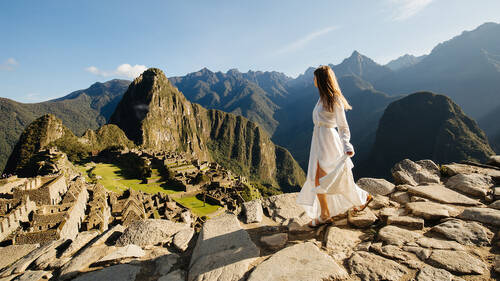 card-tag-title
card-tag-titleThe Best of Peru
9days9 days in Peru with Valencia Travel to experience the highlights that the country has to offer on your Machu Picchu Tour.
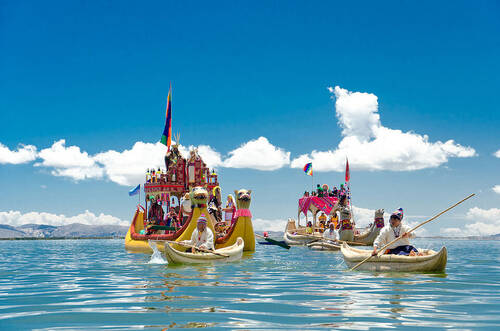 card-tag-title
card-tag-title12 Day – Classic Peru
12daysExplore the heart and soul of Peru with Valencia Travel. Click here to book our Peru Express travel package today!
 card-tag-title
card-tag-title7 Day - Classic Peru Trip
7daysValencia Travel's Peru itinerary for 7 Days is a bucket-list adventure. Click here to learn about all the unforgettable experiences you'll encounter!
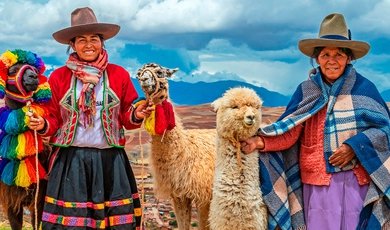 card-tag-title
card-tag-titlePeru Express
12daysExperience Peru's landscapes and culture with our 12-day Peru Express Travel Package. Explore Lima, Cusco, Lake Titicaca, and the iconic Machu Picchu with the perfect balance of guided excursions and free time. Discover the vibrant Andean heritage and Peruvian gastronomy.
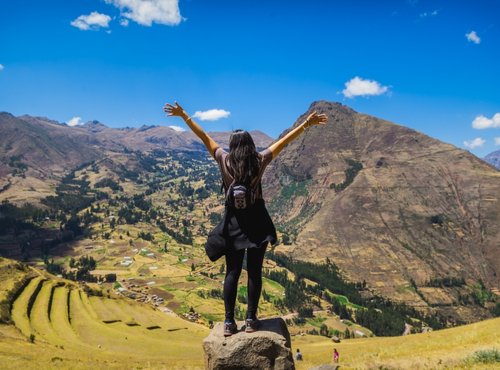 card-tag-title
card-tag-titleSacred Land of the Incas
13daysExplore all of The land of The Incas on Valencia Travel’s Peru Trip Package. Click here to learn more and book now!
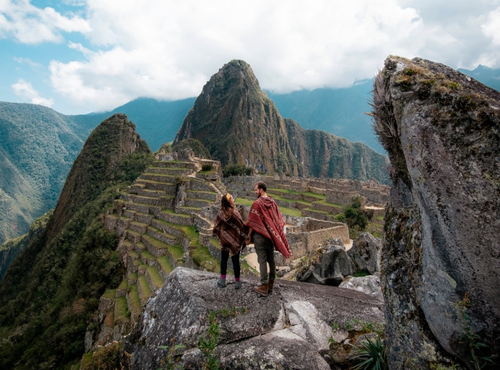 card-tag-title
card-tag-titleThe Best of Magical Peru
15daysSpend 15 days in Peru with Valencia Travel on a tour that visits all of the emblematic sites of the country. Click here to learn more and book your trip today!
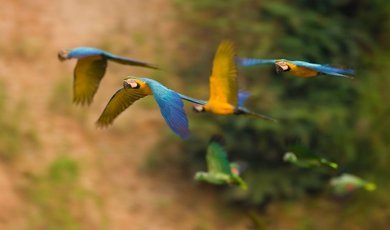 card-tag-title
card-tag-titleColours of Peru
14daysThe Colours of Peru call to you with all the allure of the ancient and the mysterious. Spend 14 days in Peru on this delightful tour with Valencia Travel Cusco!
contant-us-title
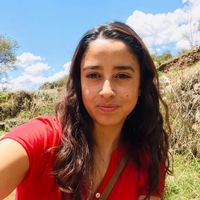
specialist-box-title
Carla Esquivel
specialist-box-phrase
RELATED TOURS
top-tours-tooltip

Taste of Peru Experience and Traditional Lunch
half-dayscard-destinations-tag: Lima
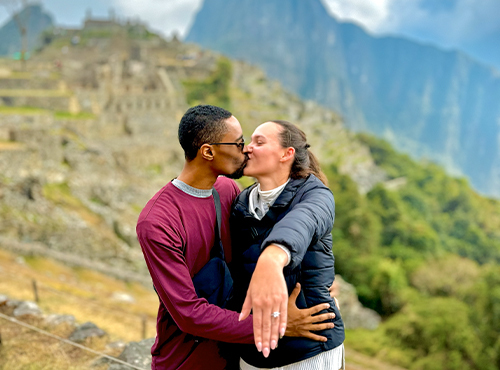
Machu Picchu Express
7dayscard-destinations-tag: Cusco, Lima, Machu Picchu, Sacred Valley
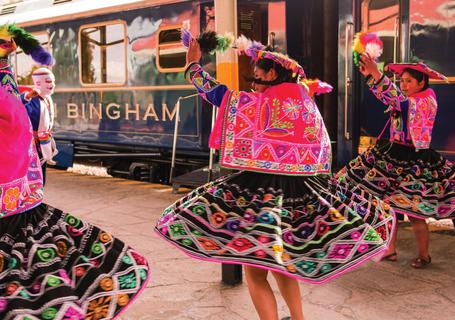
Luxury Machu Picchu Express
6dayscard-destinations-tag: Cusco, Machu Picchu, Rainbow Mountain, Sacred Valley
asso-info-tooltip


